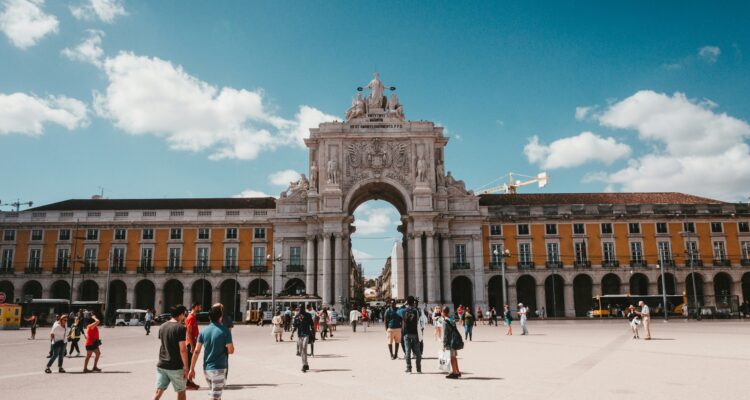There’s something deeply magnetic about Lisbon—a city that effortlessly blends melancholy and light, past and present, with its own unique sense of elegance. Between steep hills and scenic miradouros, yellow trams and azulejos that tell stories, Lisbon welcomes you with a rhythm that is both slow and vibrant.
Whether you’re in search of contemporary art or historic charm, authentic flavors or intimate corners where you can listen to fado, this guide is designed to help you experience a perfect weekend in the Portuguese capital: from must-see museums and restaurants worth bookmarking to a couple of pasteis de nata you simply must try… plus plenty of stops that will turn your trip into an unforgettable memory.
Pack comfortable shoes, an open appetite, and a desire to be surprised—Lisbon is urban poetry, and every corner is an invitation to slow down.
Enjoy your trip!
.
Locke de Santa Joana | Where to Stay (and So Much More) in Lisbon
Let’s start with where to stay: I highly recommend Locke de Santa Joana, one of Lisbon’s most exciting new openings. Set in a beautifully restored 17th-century former convent, this hotel is more than just a place to sleep—it’s a fully immersive experience that blends Portuguese history with a modern design aesthetic, meticulously curated down to the finest detail. Its location is strategic: just a short walk from Avenida da Liberdade and Marquês de Pombal, in a quiet yet well-connected area, perfect for exploring the city without the uphill climbs of the historic center.
The atmosphere here is that of a boutique hotel with a cosmopolitan soul, created for modern travelers, digital nomads, and design lovers alike. The interiors, designed by Post Company, strike a perfect balance between natural materials, warm tones, handcrafted ceramics, and retro touches. With 370 units ranging from functional studios to exclusive suites nestled in the convent’s original wings, every room comes fully equipped with a kitchen, dishwasher, washing machine, and other thoughtful comforts—ideal even for long stays.
But the true heart of Locke de Santa Joana lies in its shared spaces: a large central courtyard with a seasonal outdoor pool, co-working areas, a 24-hour gym, and even a small on-site museum telling the story of the building. The food and drink offerings are equally impressive and diverse, with several venues under one roof: Santa Marta, a laid-back indoor-outdoor restaurant, and the soon-to-open Santa Joana, a more refined spot located in the convent’s former dining hall. There’s also Kissaten, a Japanese-style music lounge bar, plus a cocktail bar and underground club in the works.
In short, Locke de Santa Joana is the perfect choice for those looking for a stay in Lisbon that’s anything but ordinary. It’s where heritage meets contemporary living—a place to relax, recharge, and experience the city with fresh eyes. A must-book address for anyone who values personality, character, and thoughtful design.
.
And now let’s begin the journey—this guide is structured across three days, with stops located close to one another, perfect for being followed in order. But consider this more than an itinerary: it’s a personal story designed to inspire you. Feel free to mix, match, and choose the experiences that truly spark your curiosity!
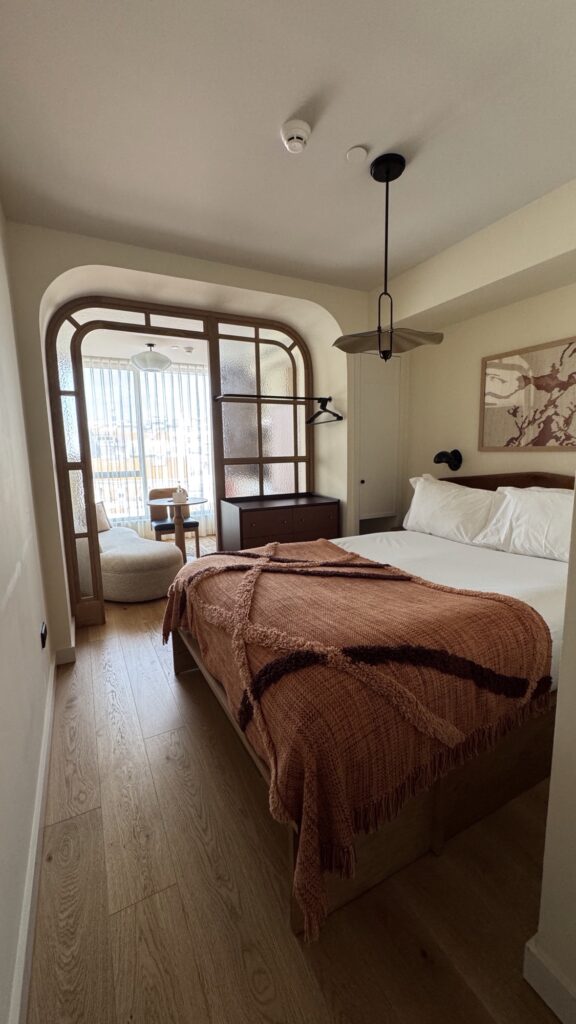
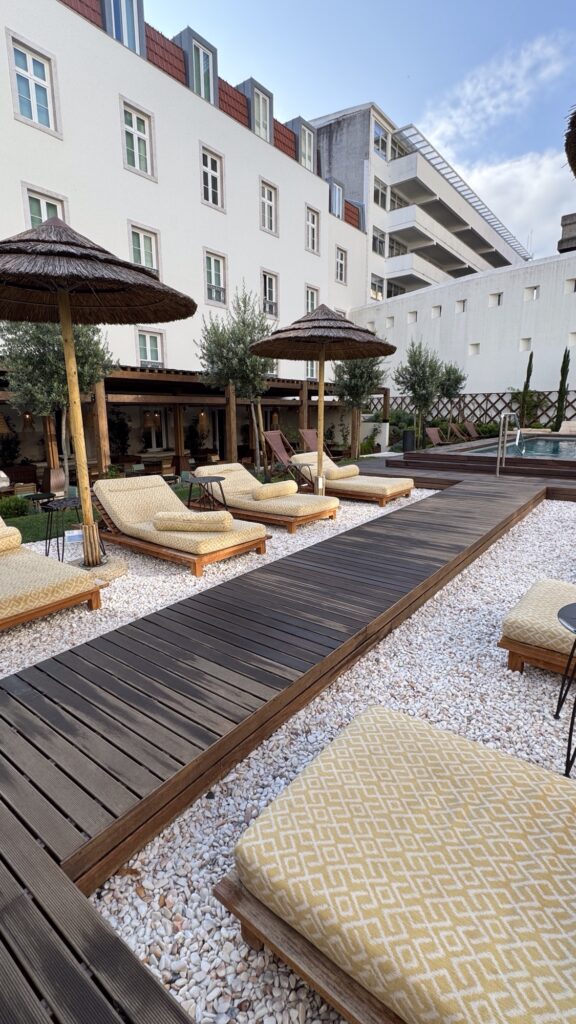
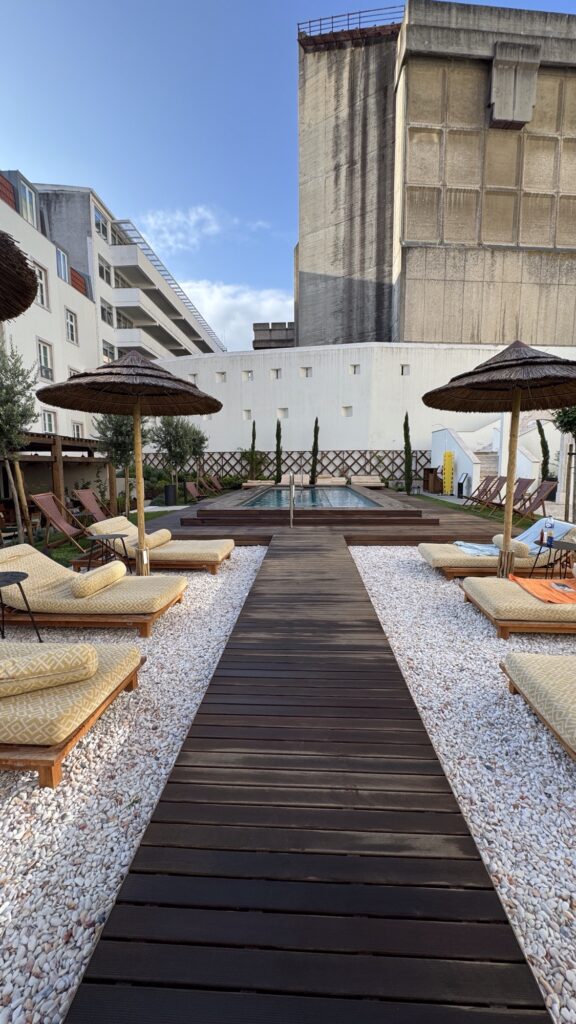
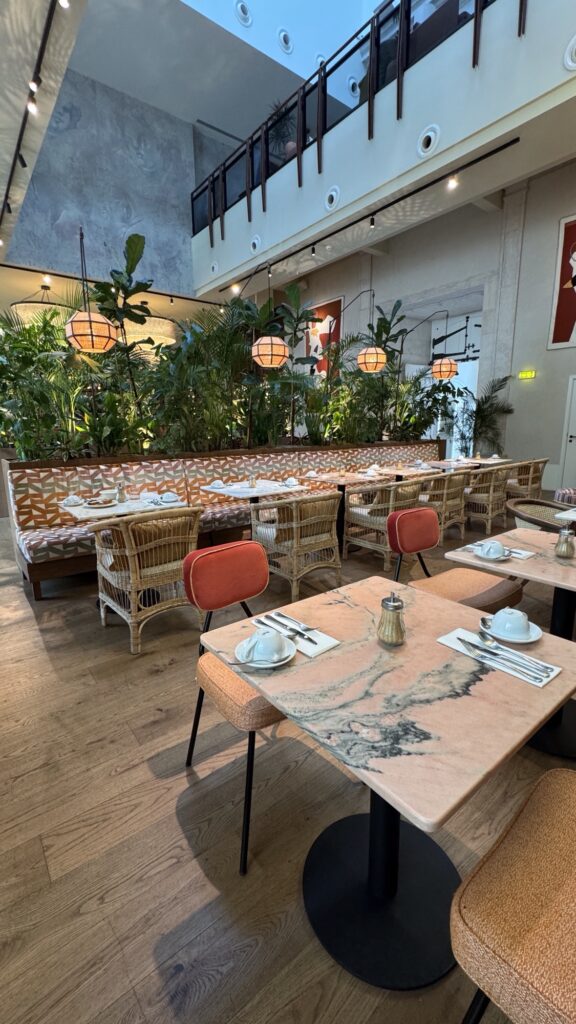
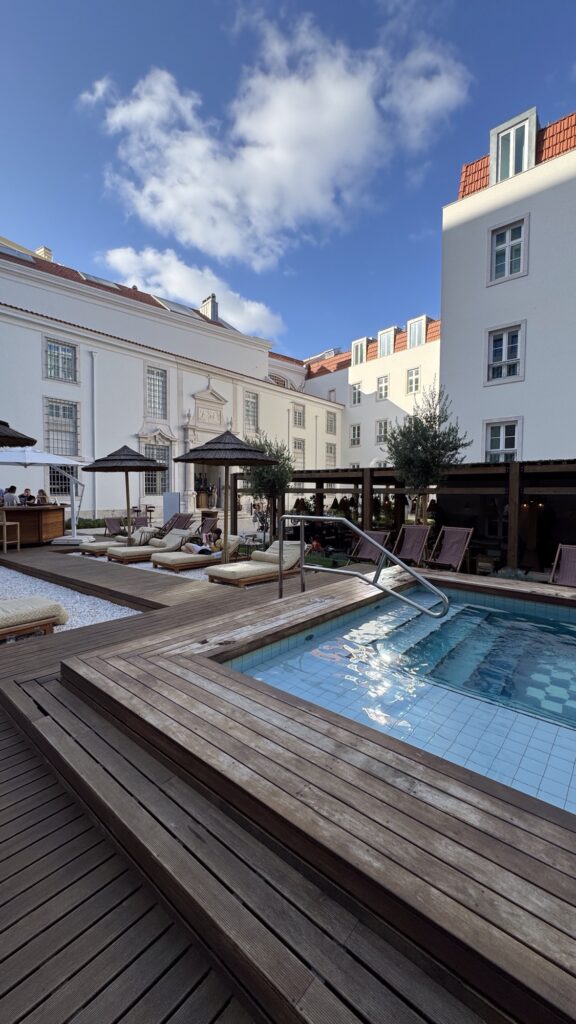
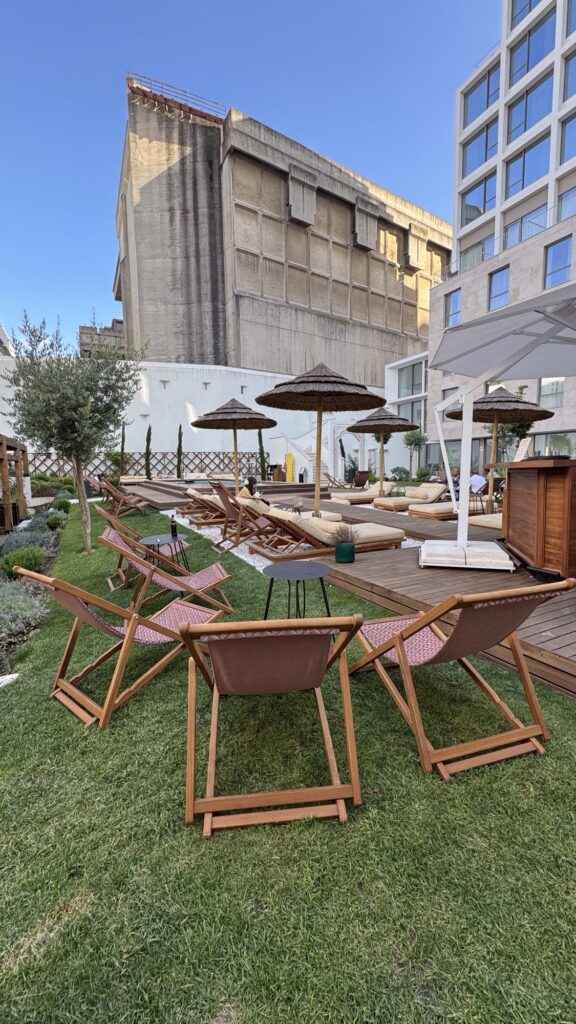
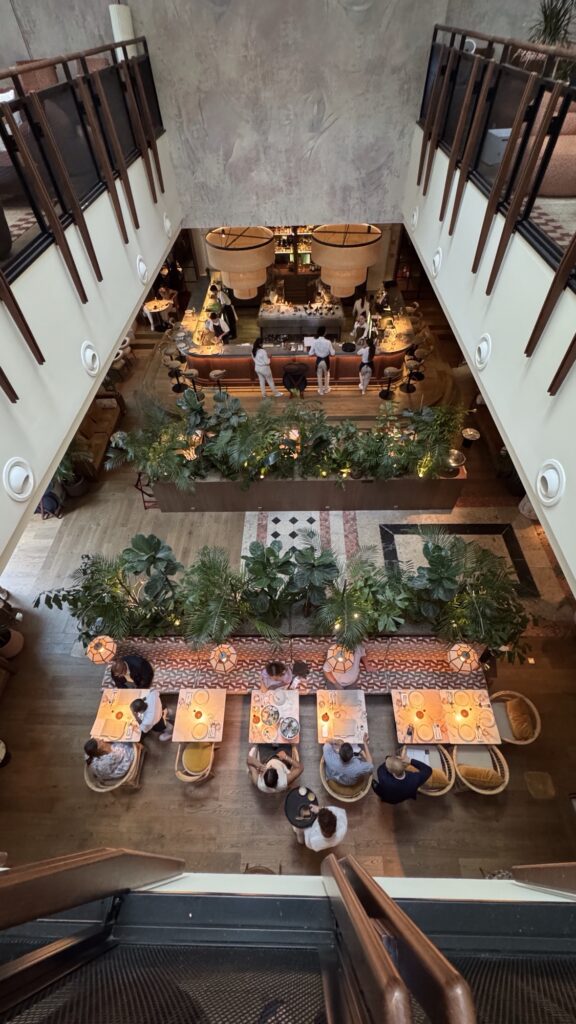
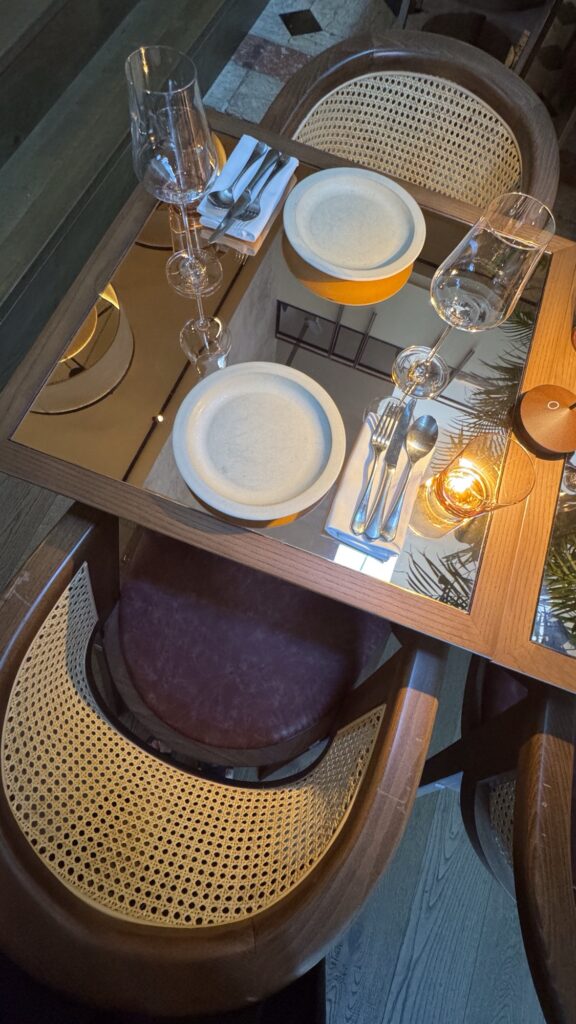
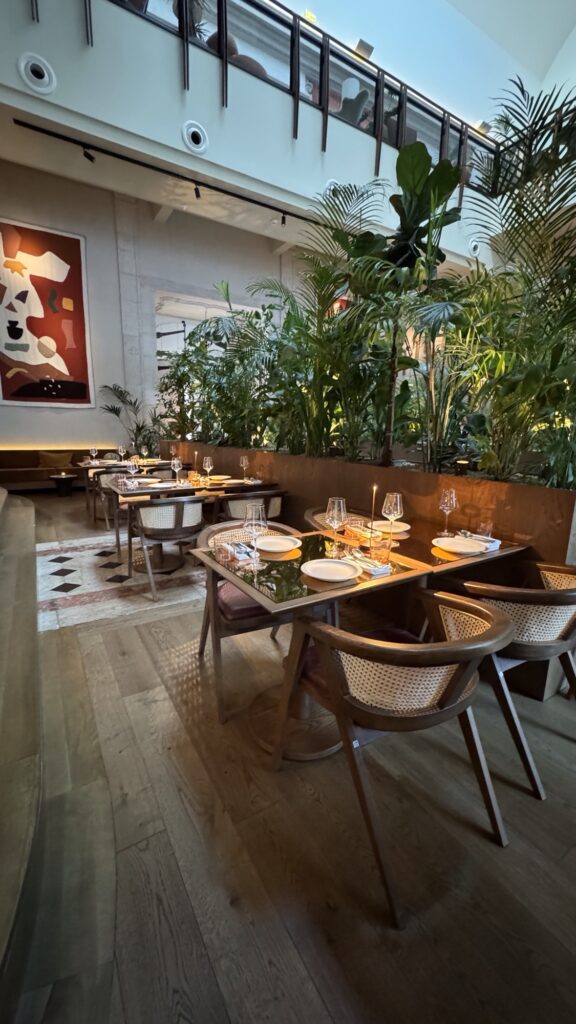
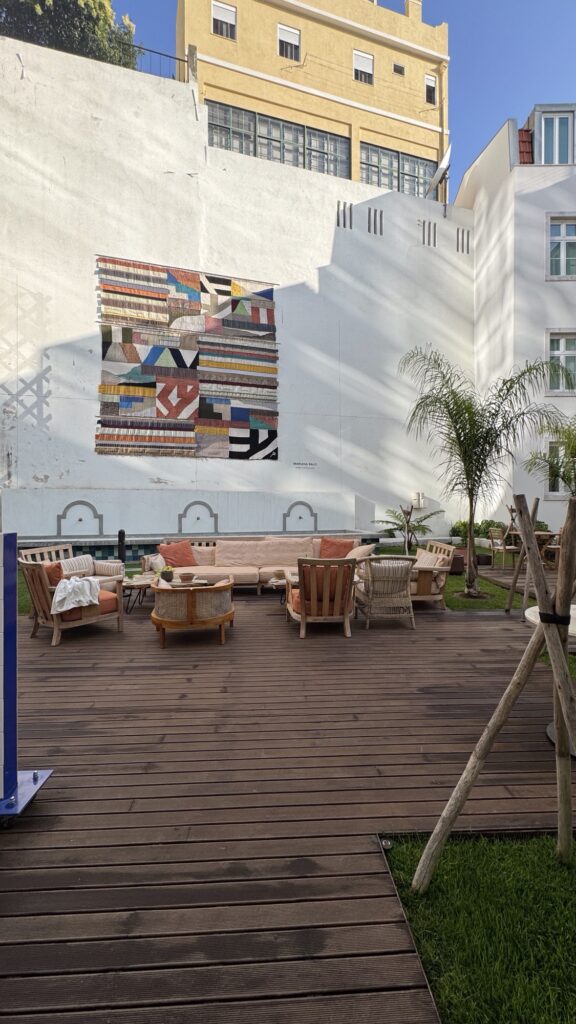
.
DAY 1
Monumento Aos Combatentes do Ultramar
The Monumento aos Combatentes do Ultramar is a memorial located in Lisbon, dedicated to the Portuguese soldiers who fought and lost their lives in the Portuguese Colonial Wars (also known as the Overseas Wars, which gives the monument its name). These conflicts took place between 1961 and 1974 in Africa, marking a significant and painful chapter in Portugal’s modern history.
.
Torre de Belem (daily 9.30-17.30)
UNESCO World Heritage Site, monumental landmark of Lisbon, and a cornerstone of Portuguese identity, the Belém Tower stands as a powerful symbol of a nation turned toward the sea and the spirit of discovery.
Thanks to the Age of Discoveries, Lisbon rose to become the world’s leading trade hub during the 15th and 16th centuries. To protect the city, King John II conceived a pioneering maritime defense project, which was completed in 1514 with the construction of the Belém Tower, designed by architect Francisco de Arruda. The structure uniquely combines a traditional medieval tower with a modern, forward-positioned bastion equipped with artillery.
King Manuel I ensured the tower visibly reflected his authority, decorating it with his royal coat of arms, the armillary sphere, and the Cross of the Order of Christ—symbols that powerfully evoke Portugal’s maritime empire and aspirations.
.
Padrão dos Descobrimentos
The Monument to the Discoveries (Padrão dos Descobrimentos in Portuguese) is one of Lisbon’s most iconic landmarks, located in the Belém district along the banks of the Tagus River. It celebrates the era of Portuguese maritime exploration during the 15th and 16th centuries, known as the Age of Discoveries.
The original version was built in wood in 1940 for the Portuguese World Exhibition. The current monument, made of concrete and limestone, was inaugurated in 1960 to mark the 500th anniversary of the death of Prince Henry the Navigator (Infante Dom Henrique).
Henry the Navigator is shown holding a small caravel, standing prominently at the tip of the monument, shaped like the prow of a ship. Flanking him on both sides are 33 statues of key historical figures connected to Portuguese exploration: explorers, cartographers, missionaries, writers, monarchs, and scientists—including Vasco da Gama, Ferdinand Magellan, Pedro Álvares Cabral, and Luís de Camões.
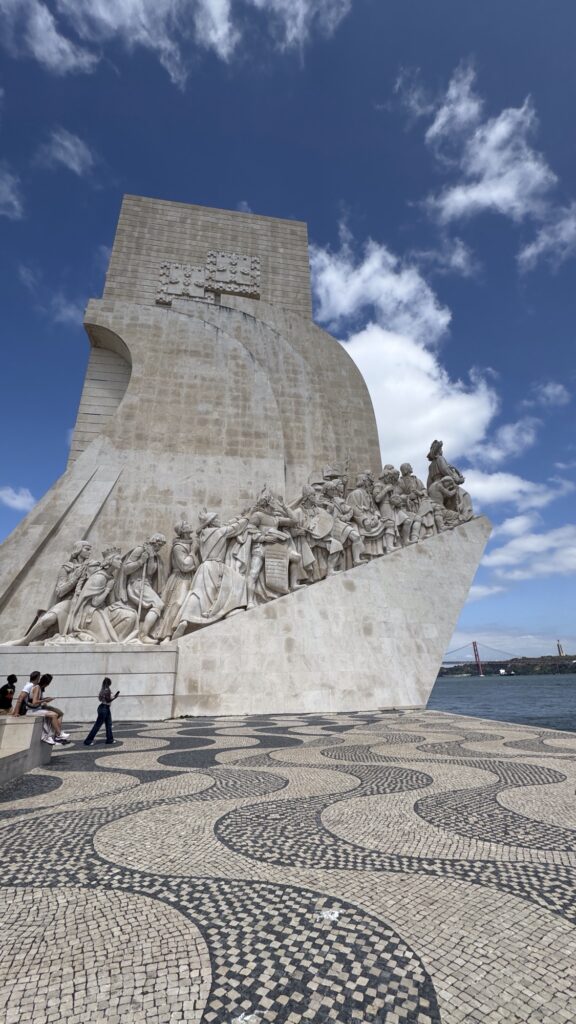
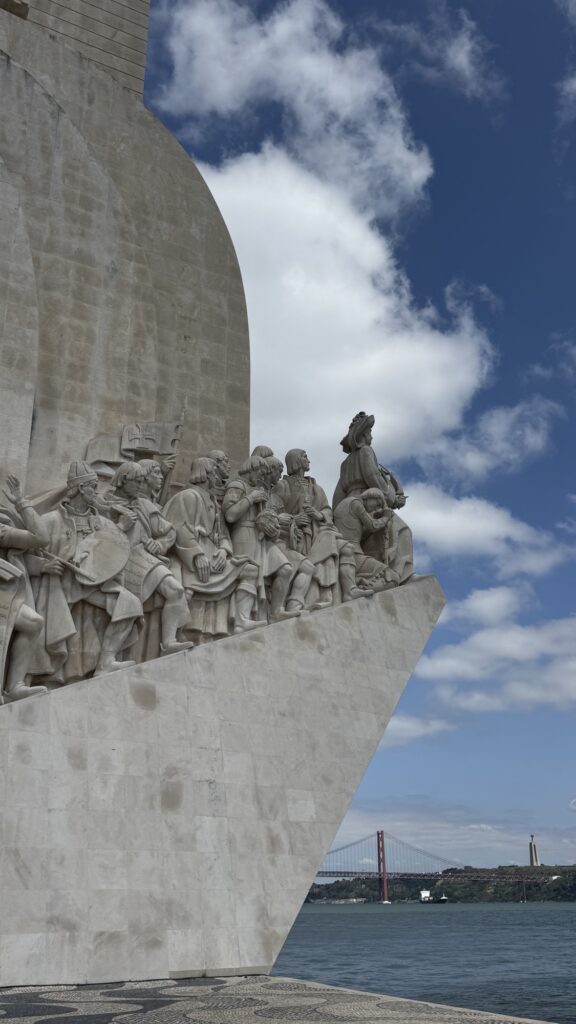



.
Monastery of the Jerónimos
If there is one place that truly embodies the spirit and pride of Portugal’s Age of Discoveries, it is undoubtedly the Jerónimos Monastery, located in the heart of the Belém district—designated a UNESCO World Heritage Site since 1983 and recognized as a national monument. This extraordinary monastic complex is not just an architectural masterpiece; it stands as a profound symbol of the nation’s history, faith, and ambition.
Commissioned by King Manuel I in the early 16th century, the monastery was conceived during a time when Portugal stood at the height of its maritime power. It was from Belém that Vasco da Gama set sail for India, opening the sea route that would forever change trade between Europe and Asia. The site where the monastery now stands was once a humble hermitage where sailors would gather to pray before braving the ocean. Out of this spiritual tradition came the idea to build something grand—something that would honor and celebrate these epic voyages.
And so the Monastery of the Jerónimos was born, entrusted to the Order of Saint Jerome, whose monks were tasked with praying for the king’s soul and the safe passage of navigators. The building was constructed in the unique Manueline style, a Portuguese version of late Gothic, rich with maritime symbolism—stone-carved ropes, knots, seashells, armillary spheres, and exotic animals. The intricate decoration vividly tells the story of Portugal’s oceanic adventures.
Stepping inside the Church of Santa Maria de Belém, visitors are immediately struck by the grandeur of the space: a single soaring nave supported by tall, finely carved columns. It is here that some of Portugal’s most important cultural and historical figures are buried, including Vasco da Gama, the legendary explorer, and Luís de Camões, the epic poet of Os Lusíadas, often referred to as Portugal’s Dante. The church is a true national pantheon, where history is honored not just in stone, but in the collective memory of the nation.
Exiting the church, one enters the magnificent cloister—a place of light and silence where the stone carvings continue to tell tales of the sea and of faith. Time seems to slow here, and the long breath of history becomes palpable. Even Fernando Pessoa, the great poet of the 20th century, has a tomb within these walls—a poignant symbol of the bridge between ancient glory and modern reflection on Portuguese identity.
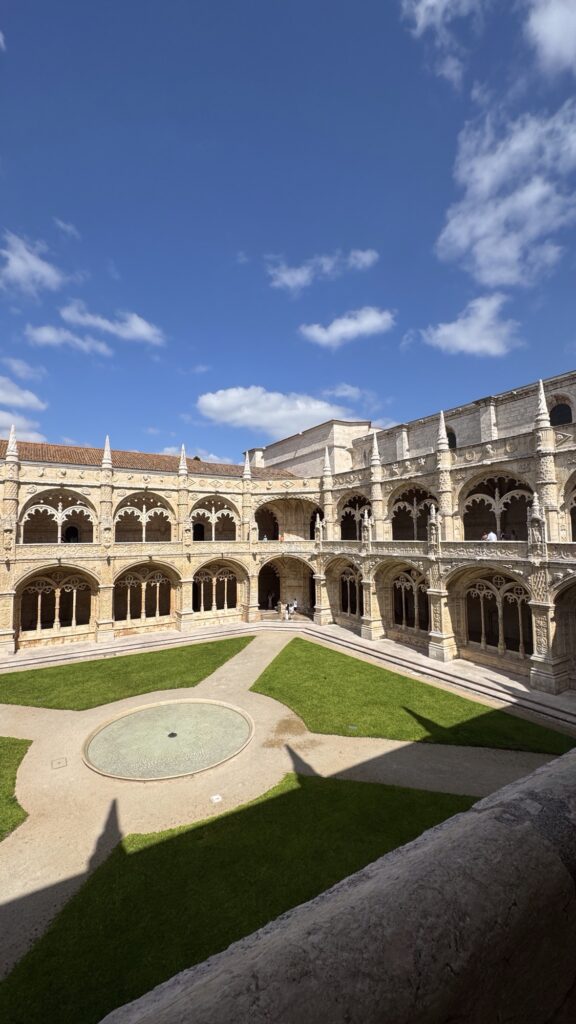
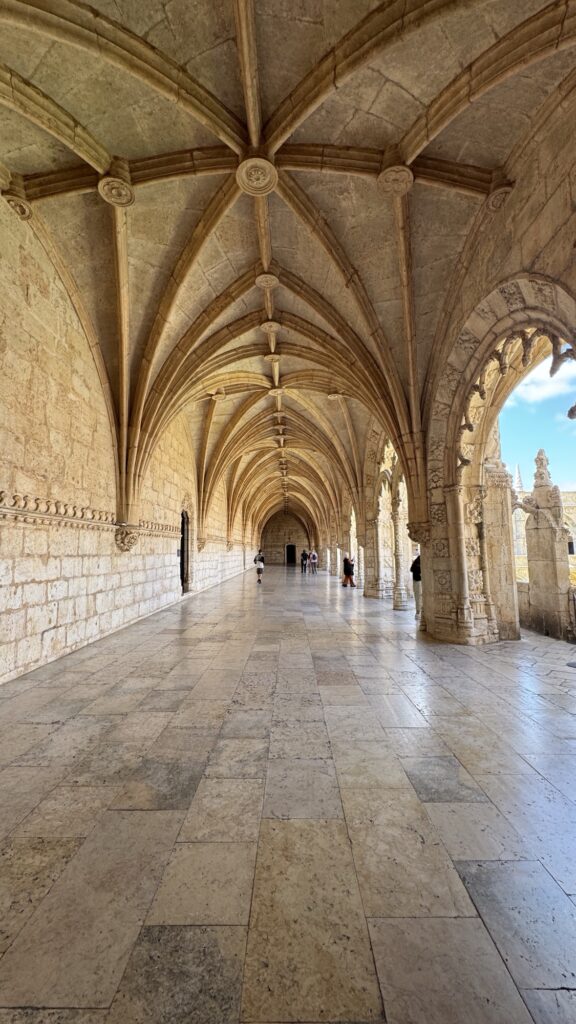
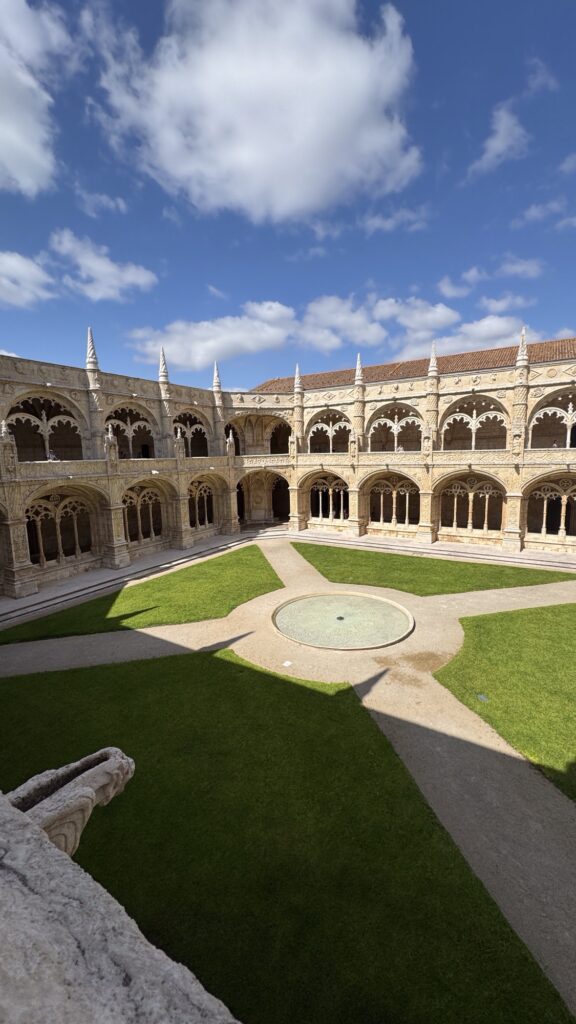
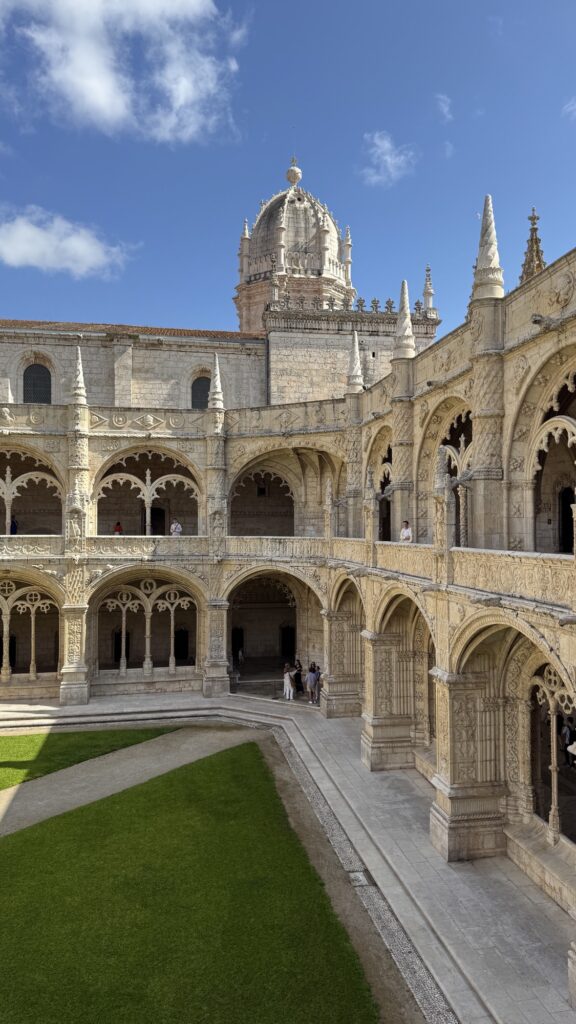
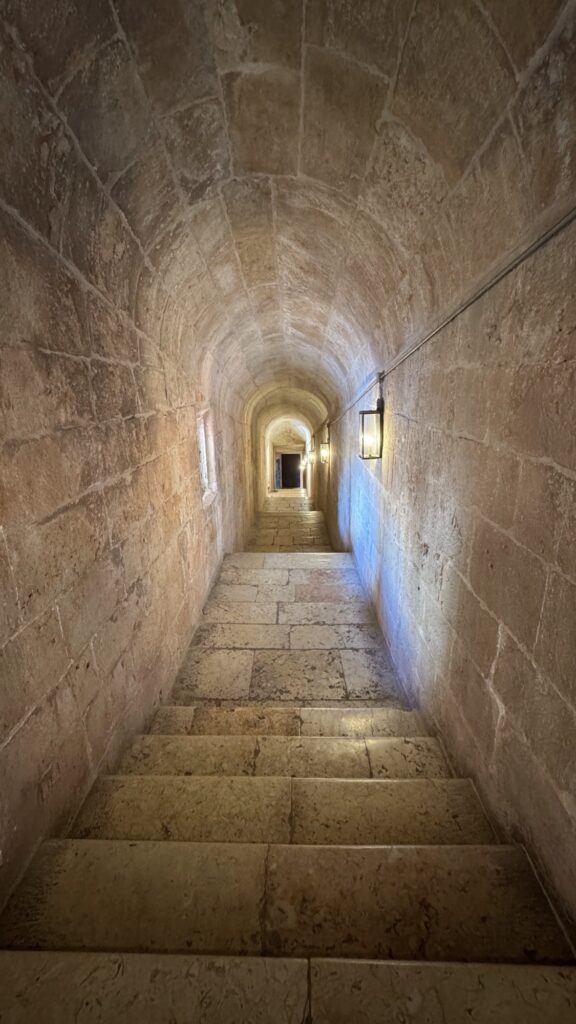
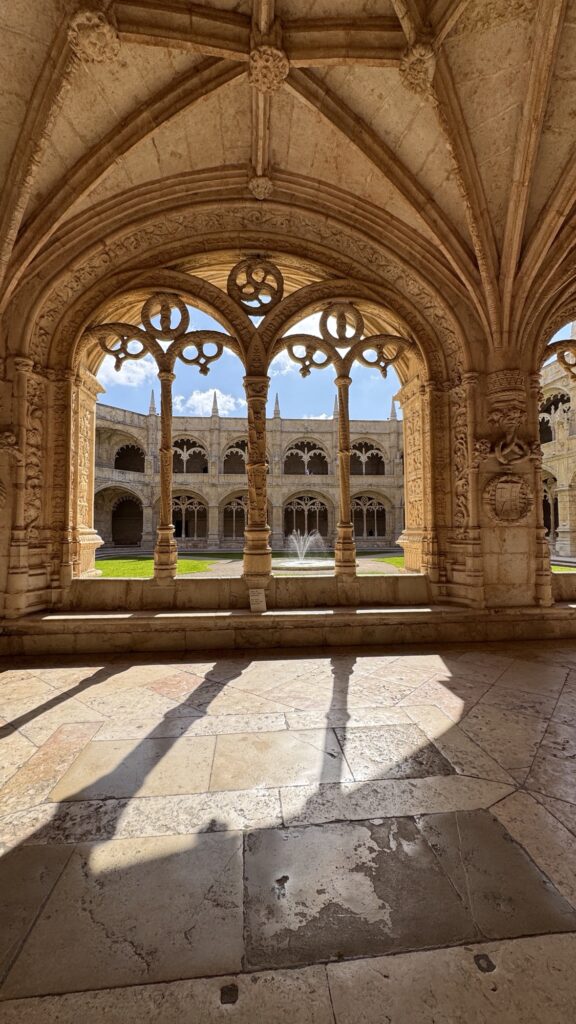
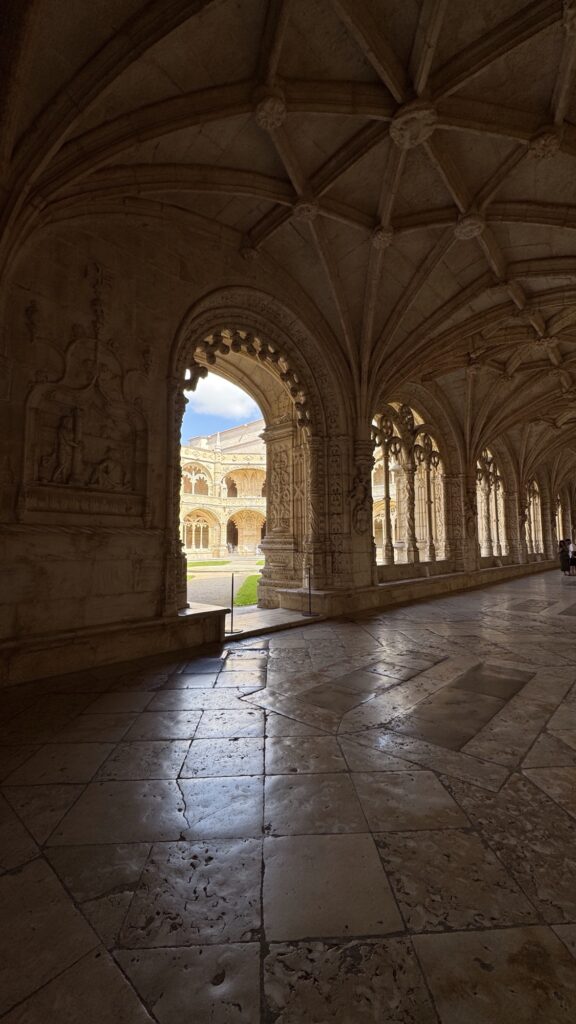
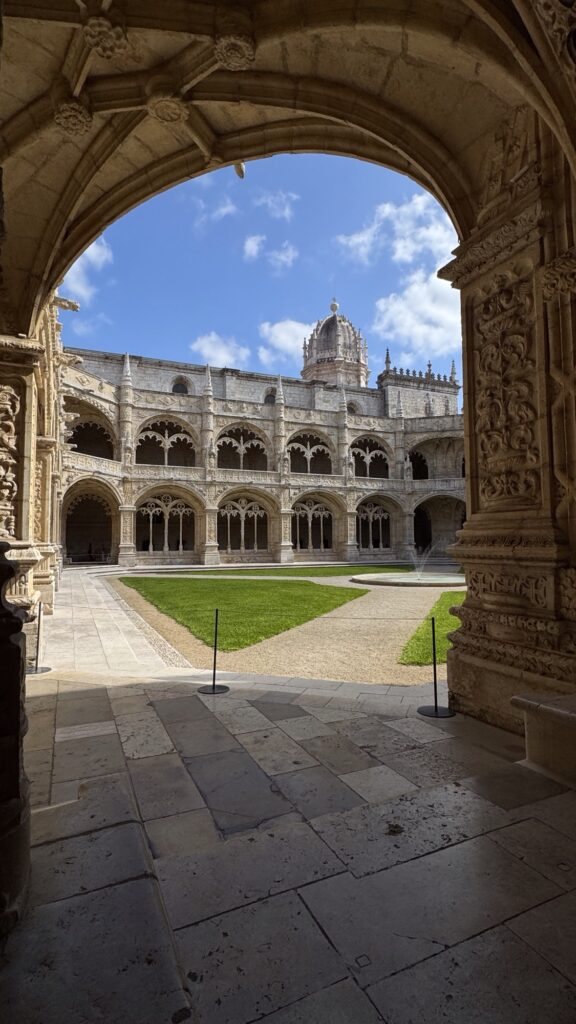
.
MAAT Museum of Art, Architecture and Technology
Located on the banks of the Tagus River, in the heart of Lisbon’s historic Belém district, the MAAT – Museum of Art, Architecture and Technology stands as one of the boldest expressions of contemporary art in the city. Inaugurated in October 2016 and designed by the London-based studio AL_A, led by British architect Amanda Levete, the museum establishes a striking dialogue between Lisbon’s industrial past and its cultural future.
Its signature building—a sinuous strip of white ceramic facing the river—evokes the waves, sails, and routes once traveled by Portuguese navigators. It encompasses approximately 3,000 square meters of indoor exhibition space, surrounded by 7,000 square meters of public outdoor areas, including the MAAT Garden, designed to harmonize with the riverside landscape through terraces, native flora, and artistic installations.
What makes the project particularly captivating is the relationship between the structure and its surroundings: standing just 12 meters tall, the museum invites visitors to walk above, below, and through it, offering ever-changing views of shimmering water reflections and breathtaking panoramas of the city. The roof, conceived as a public terrace, becomes an integral part of the visitor experience—both visual and sensory.
Next to the modern Gallery Building lies the restored Central Tejo, a historic brick power station dating back to 1908. Today, it houses the permanent exhibition The Electricity Factory and the historical archive of EDP Foundation’s energy heritage. This interplay between the old and the new creates a unique cultural campus where industrial archaeology, technological innovation, and contemporary aesthetics coexist seamlessly.
MAAT’s mission goes far beyond exhibitions: it speaks to an international audience and encourages dialogue between art, architecture, and technology through temporary shows, workshops, and conferences aimed at fostering critical reflection on our relationship with the present and the future of the planet. Its programming includes both Portuguese and international artists, supported by the EDP Foundation’s contemporary art collection, which comprises over 2,500 works by more than 300 artists.
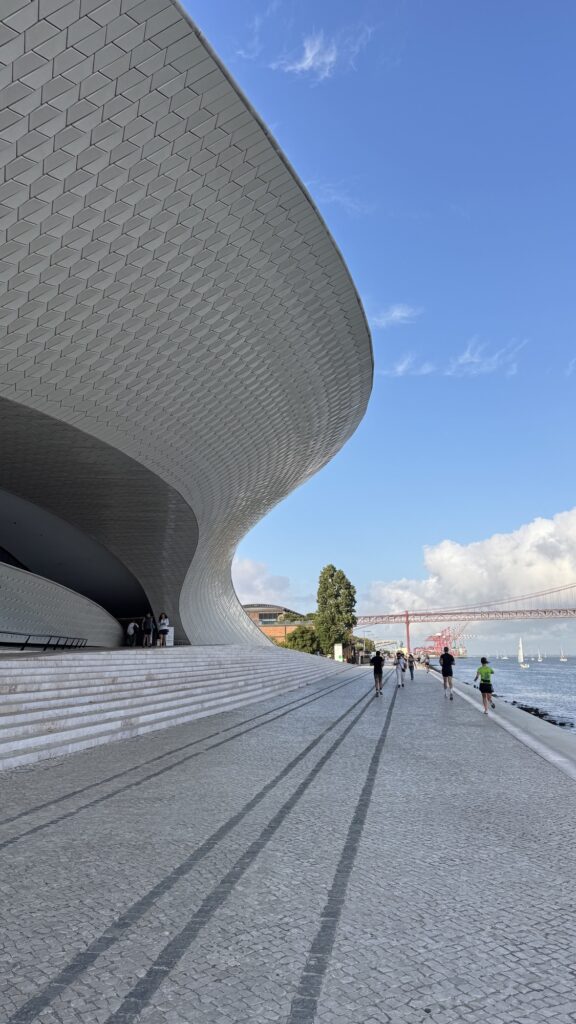
.
LX Factory
LX Factory is a former industrial site in Lisbon’s Alcântara district that has undergone a remarkable transformation since 2008. Once the beating heart of the city’s textile production dating back to 1846, today it stands as a true “creative island”, suspended between past and present.
As you stroll through its courtyards and warehouses, you’re immersed in a vibrant atmosphere filled with startups, design studios, art galleries, concept stores, restaurants, cafés, and bars. The industrial walls have been revived by large-scale murals and street art, including the iconic bee by Bordalo II, created using recycled materials, a powerful symbol of the site’s artistic and urban reinvention.
One of its most iconic gems is Livraria Ler Devagar, often cited as one of the most beautiful bookstores in the world. Housed in a former printing press, the space is filled floor-to-ceiling with books, complete with a vintage printing machine and even a suspended bicycle, all narrating stories of knowledge, memory, and creativity.
If you’re visiting on a Sunday, don’t miss the LX Market—a charming artisanal fair where you can browse vintage pieces, handmade objects, local products, and indulge in street food. It’s the perfect moment to experience the area’s most authentic and eclectic vibe, with live music, exhibitions, and performances.
The food scene is just as diverse, with international options like sushi and burgers coexisting alongside Portuguese specialties and irresistible desserts—especially the famous Landeau Chocolate cake, a must-try for chocolate lovers.
All of this unfolds in a 23,000-square-meter space nestled beneath the striking shadow of the 25 de Abril Bridge. LX Factory is a dynamic mix of coworking hub and cultural hotspot, making it a favorite hangout for locals and a must-visit destination for travelers seeking a contemporary yet authentic Lisbon experience.
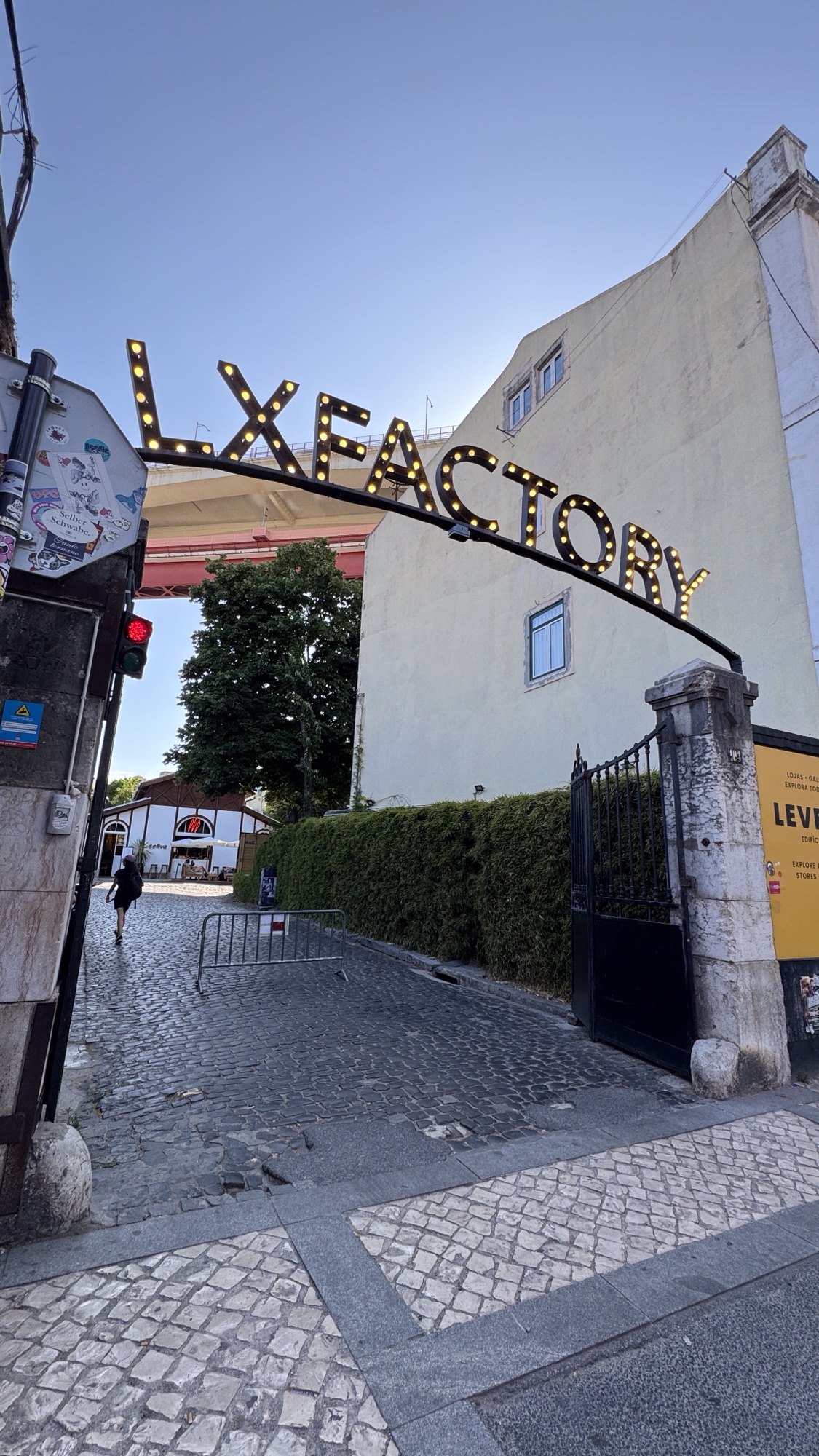
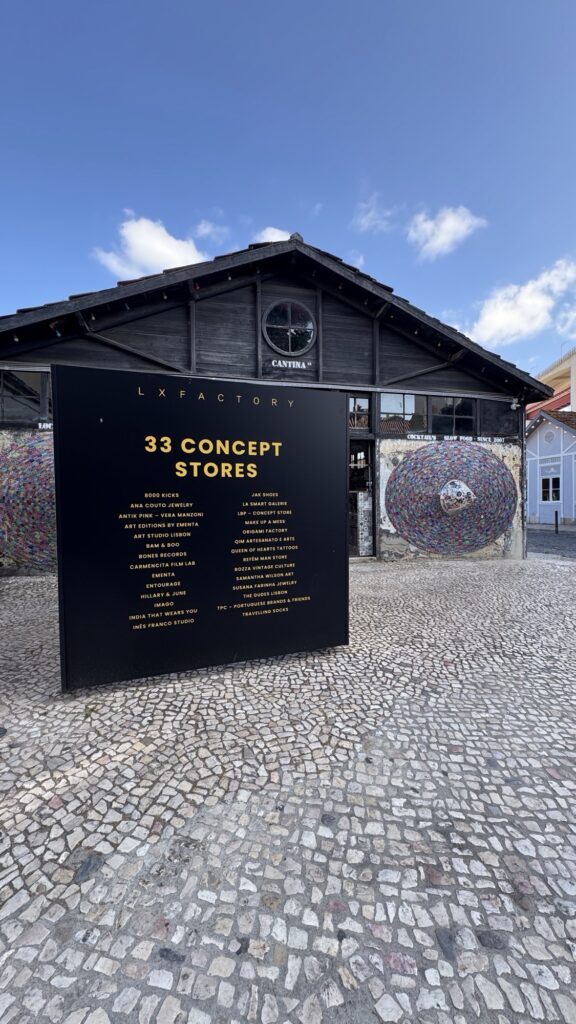
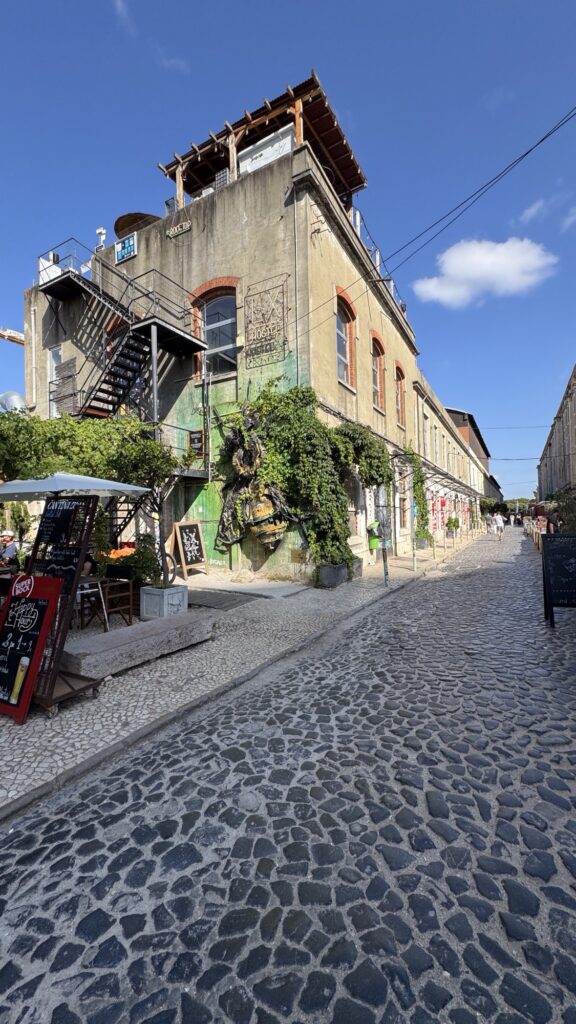
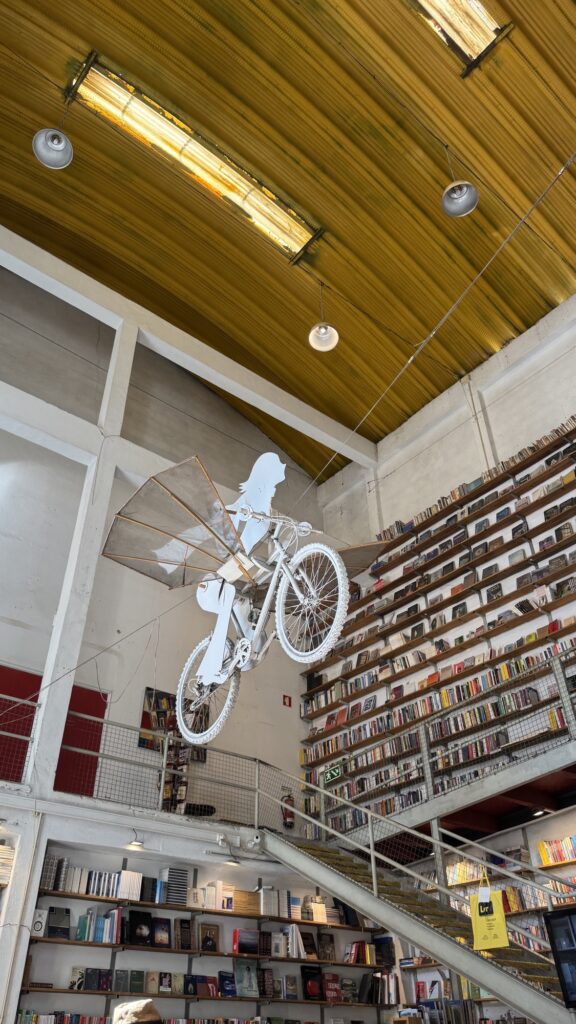

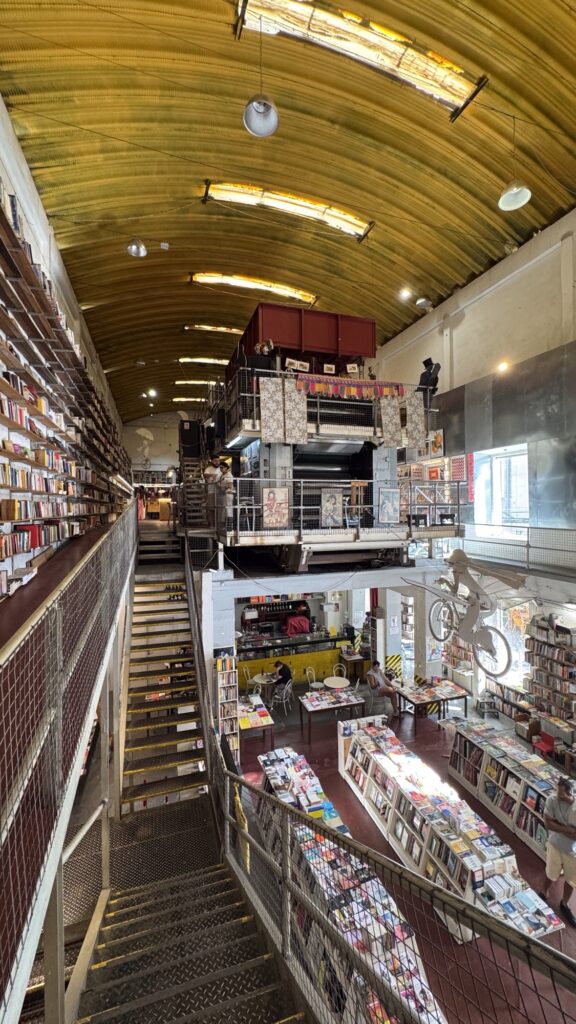
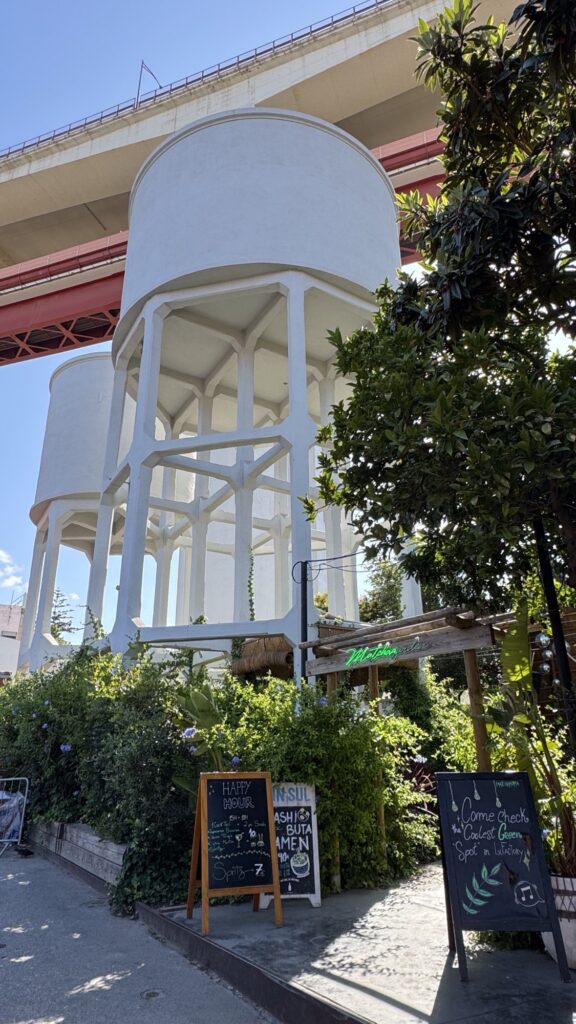
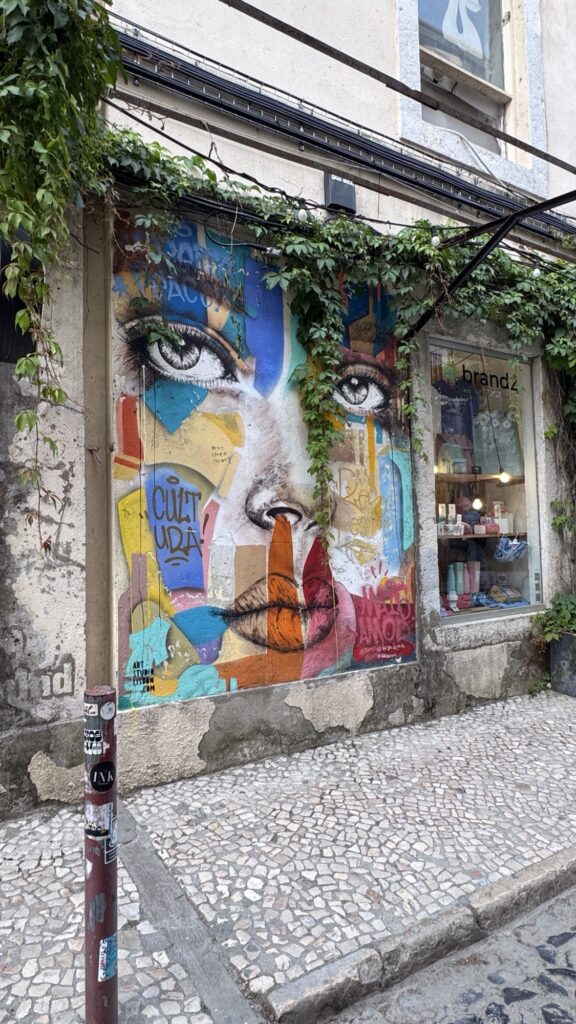
.
Bistro 100 Maneiras
In the vibrant heart of Chiado, Bistro 100 Maneiras represents the boldest and freest expression of chef Ljubomir Stanisic. Opened in 2010 in a historic Art Deco building full of memories, this award-winning bistro effortlessly blends signature cuisine with a cosmopolitan spirit, delivering a dining experience rich in character and flair.
The menu changes daily, driven by the rhythm of the seasons and the creativity of the kitchen team. Fresh ingredients, grilled surprises, and a “No Questions Asked” section that celebrates offal and lesser-used cuts in the name of zero waste—everything here is a thoughtful balance of sustainability, innovation, and flavor.
This is more than a restaurant: it’s a meeting point for gastronomy, art, and mixology, housed in an eclectic and contemporary setting, ideal for those who love to be surprised.
Must-try dishes include: Il tuo pane in paradiso: bread with butter and olive oil, il nostro Travolta: crispy potato peels with truffle sauce, Lombo Rossini: beef loin with foie gras and summer truffle
A unique spot in Lisbon for those seeking an unexpected and refined culinary journey.
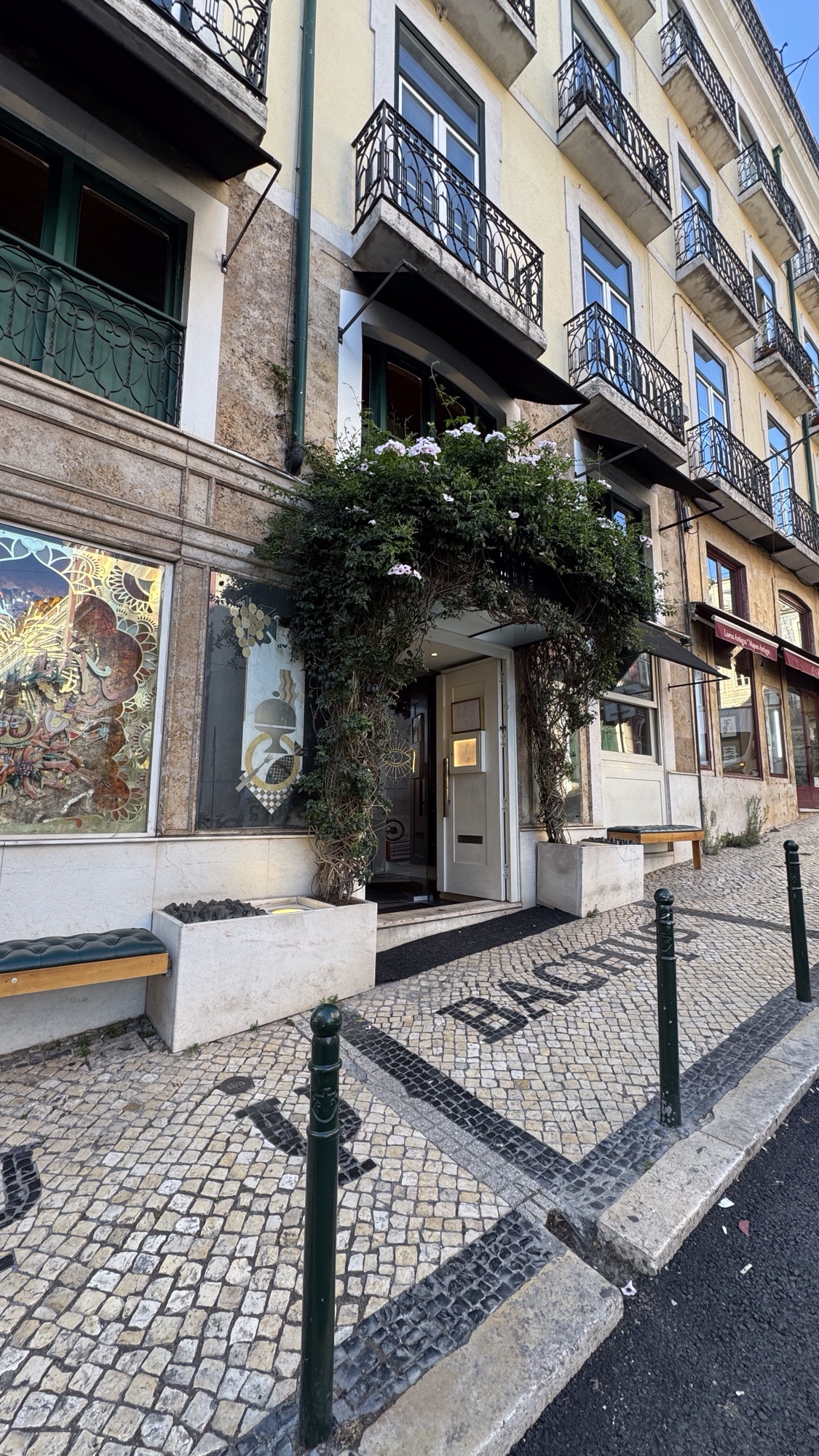


.
DAY 2
Eléctrico 28
Tram 28 (Eléctrico 28) is one of the most iconic and charming experiences you can have in Lisbon. More than just a means of transport, it’s a journey through time aboard a vintage 1930s wooden tram, narrow and perfectly suited to the winding, steep streets of the city’s historic neighborhoods.
The route passes through some of Lisbon’s most emblematic districts: from Graça, with its scenic miradouros, to Alfama, known for its Moorish alleys, continuing through Baixa and Chiado, the commercial and cultural heart of the city, then on to Bairro Alto, famous for its nightlife, and Estrela, with its basilica and gardens. The journey ends in Campo de Ourique, a residential area with an authentic local vibe, away from the usual tourist paths.
The tram departs from Martim Moniz, in the city center, and offers incredible views of squares, alleys, and landmarks that tell the story of Lisbon. If you’re short on time, it’s the perfect itinerary to experience the essence of the city in just over 40 minutes. For the best experience, consider boarding at Martim Moniz and getting off at Baixa-Chiado, preferably early in the morning to avoid the crowds.
🕰️ Tram 28 runs daily from 5:40 AM to around 10:30 PM, with trams passing every 10–15 minutes, although delays can occur due to traffic in the narrow and busy areas.
A small tip: keep an eye on your belongings—this tram is often crowded and pickpockets know it well.
.
Castelo de São Jorge (Elevador do Castelo o l’Elevador da Baixa)
The most iconic viewpoint in Lisbon is here. Located within the Castle of São Jorge, it offers a monumental and breathtaking view over the city and the Tagus River, dominating the entire surrounding landscape. The belvedere was built at the end of the 18th century, though the supporting walls date back to the 14th century. Much of it was fully rebuilt in 1940 as part of a major restoration effort to preserve Lisbon’s historical heritage.
Set within the castle grounds, this viewpoint is the perfect reward after the climb through the cobbled streets to reach it. Its cannons still point toward the river, in an eternal stance of defiance against anyone who would dare invade this proud city. Shaded by magnificent native trees, this belvedere is a must-stop for rest and contemplation—a place to soak in the spirit, history, and sheer beauty of Lisbon from above.

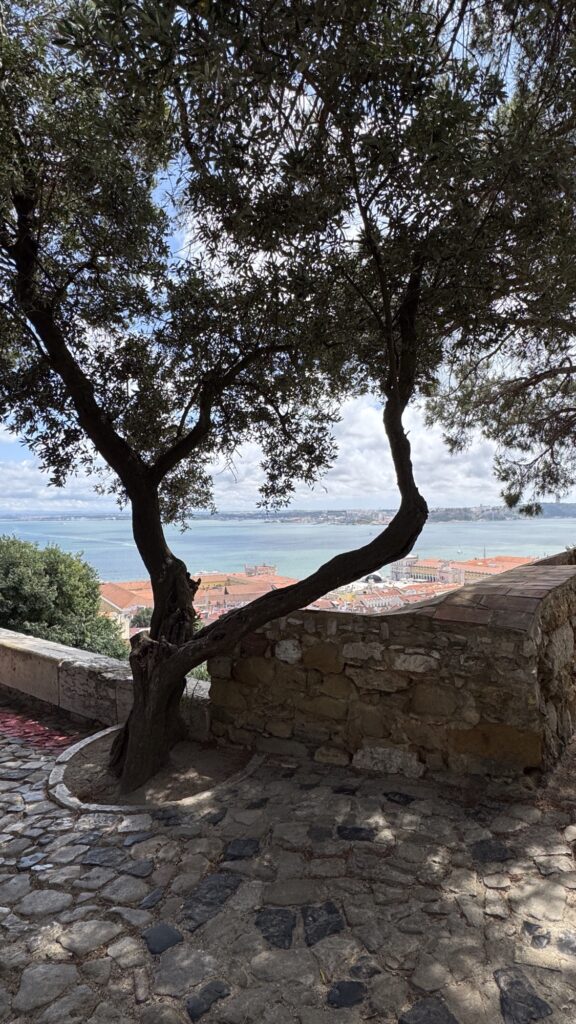
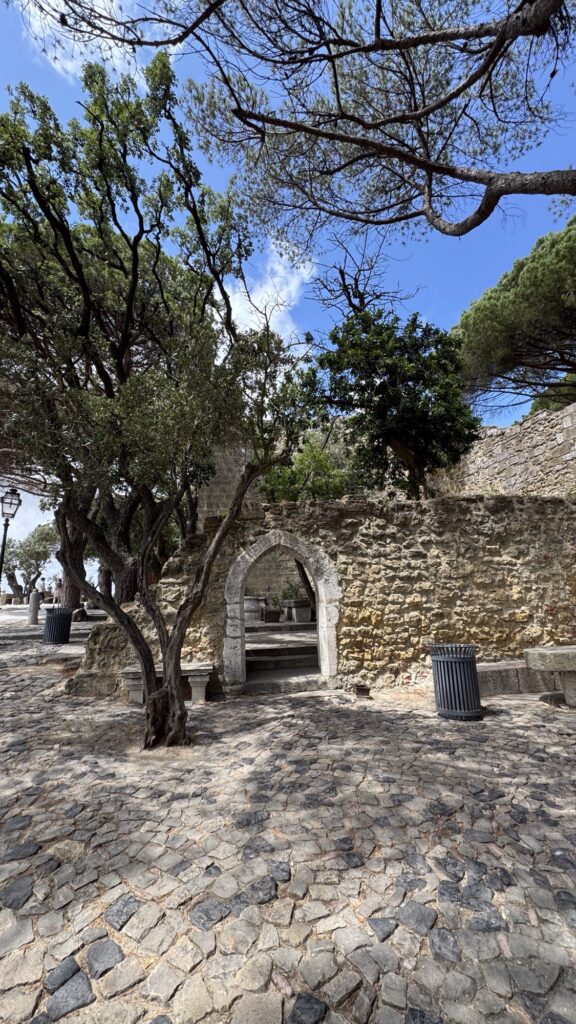



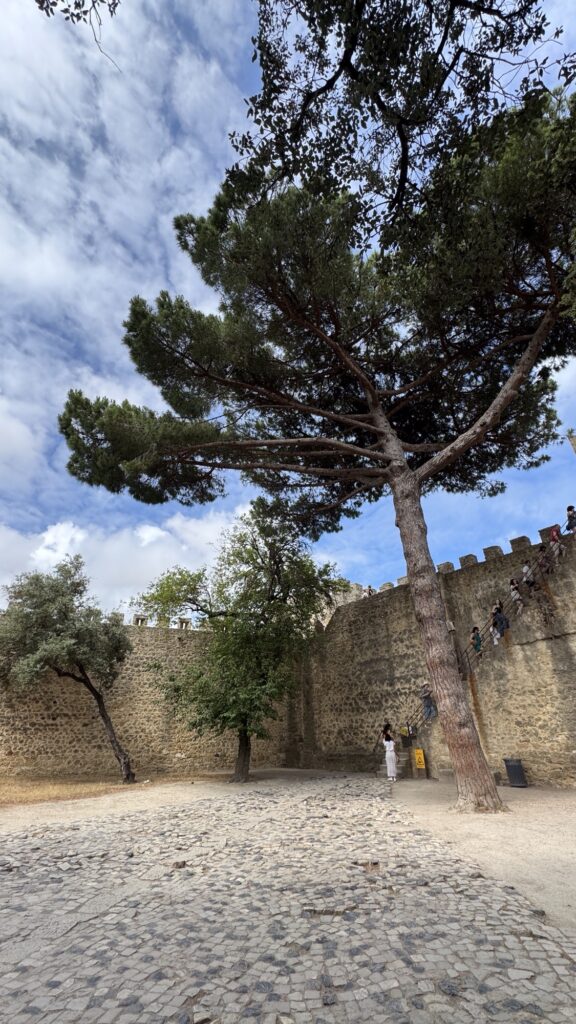
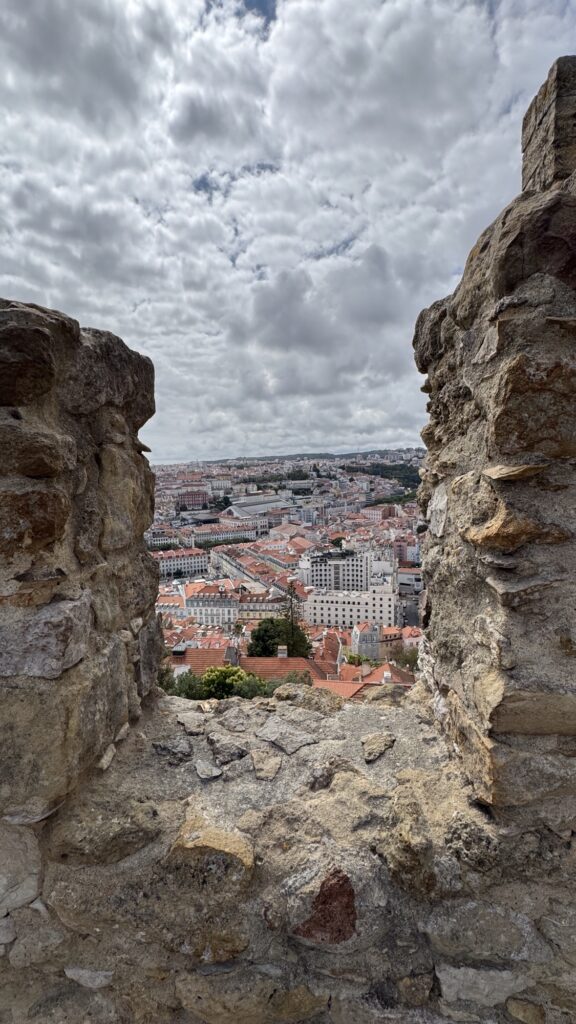
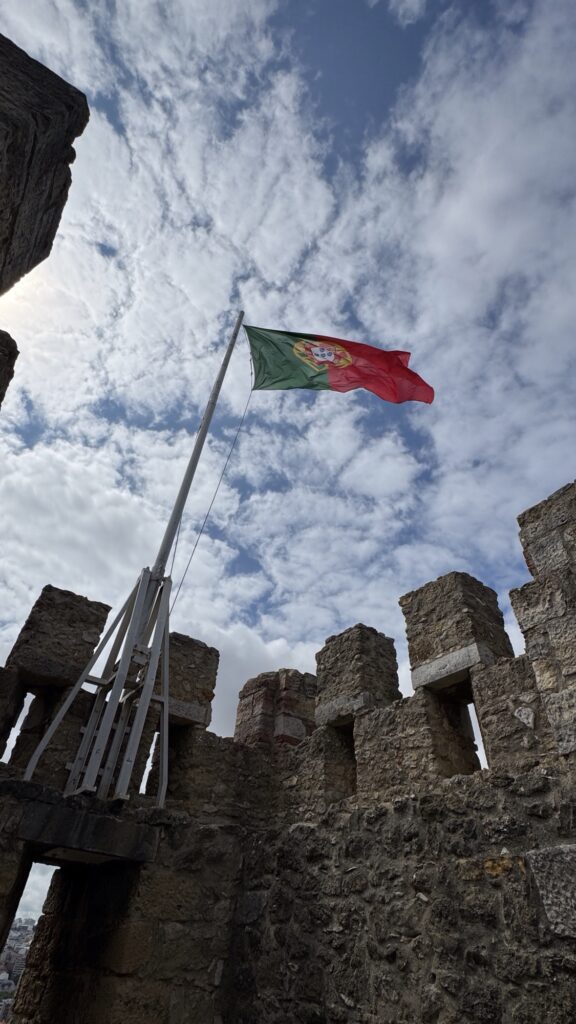

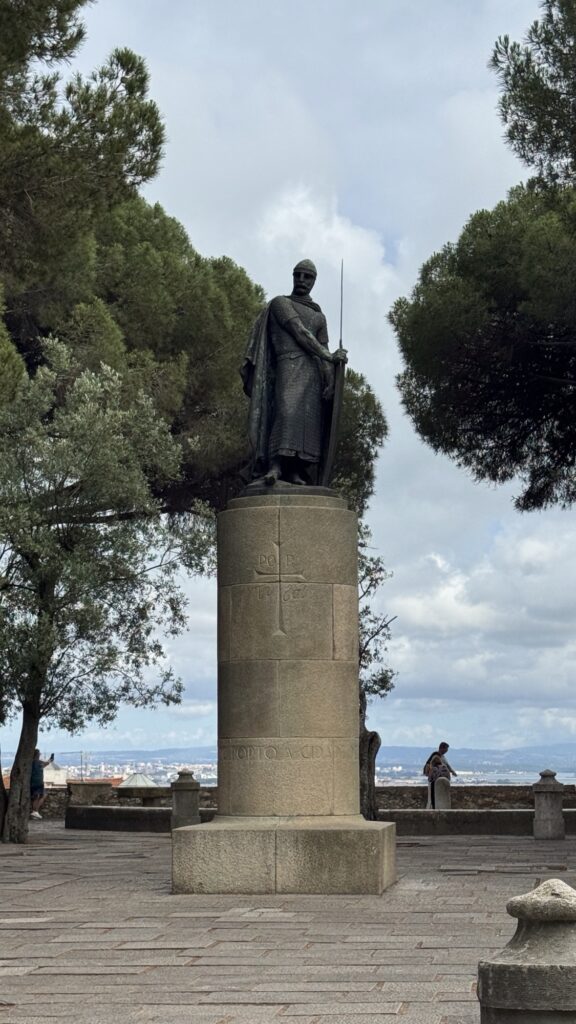
.
In the heart of São Jorge Castle, 1147 is much more than just a restaurant—it’s a journey through time. Housed in the historic Sala dos Leões, where King Afonso V once kept his royal lions, it blends history and gastronomy in a setting full of charm, with ancient azulejos and centuries-old walls that whisper stories of the past.
The cuisine is Mediterranean with a Portuguese soul—elegant yet approachable—reinterpreting classic dishes through a contemporary lens. And then there’s the panoramic terrace: a spectacular viewpoint over Lisbon, stretching from the Tagus River to the 25 de Abril Bridge, perfect for a sunlit lunch or a sunset dinner. It’s an experience that captivates both the eyes and the palate. Don’t miss: the Gratinated Oyster and the Caesar Salad.
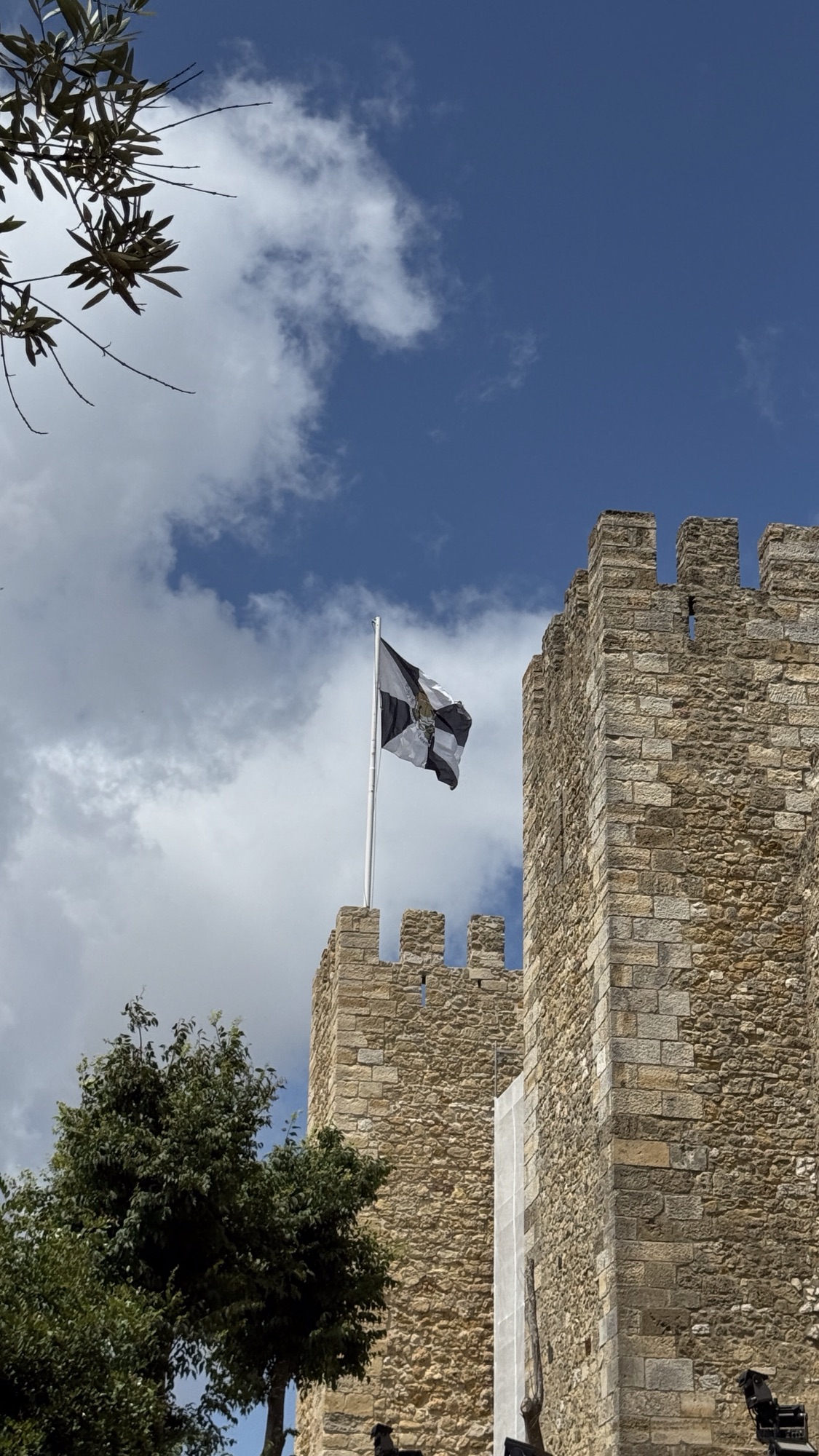
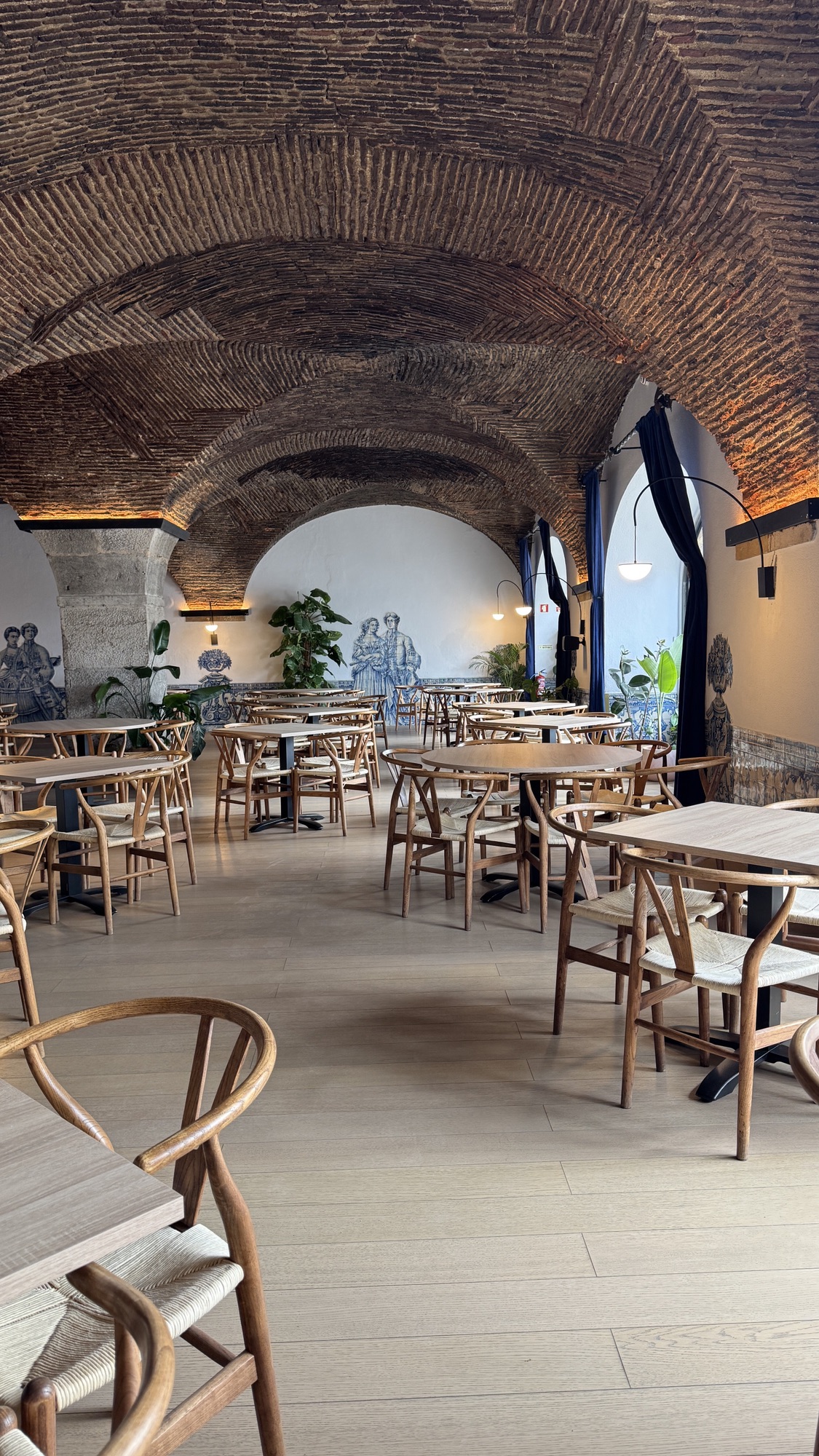
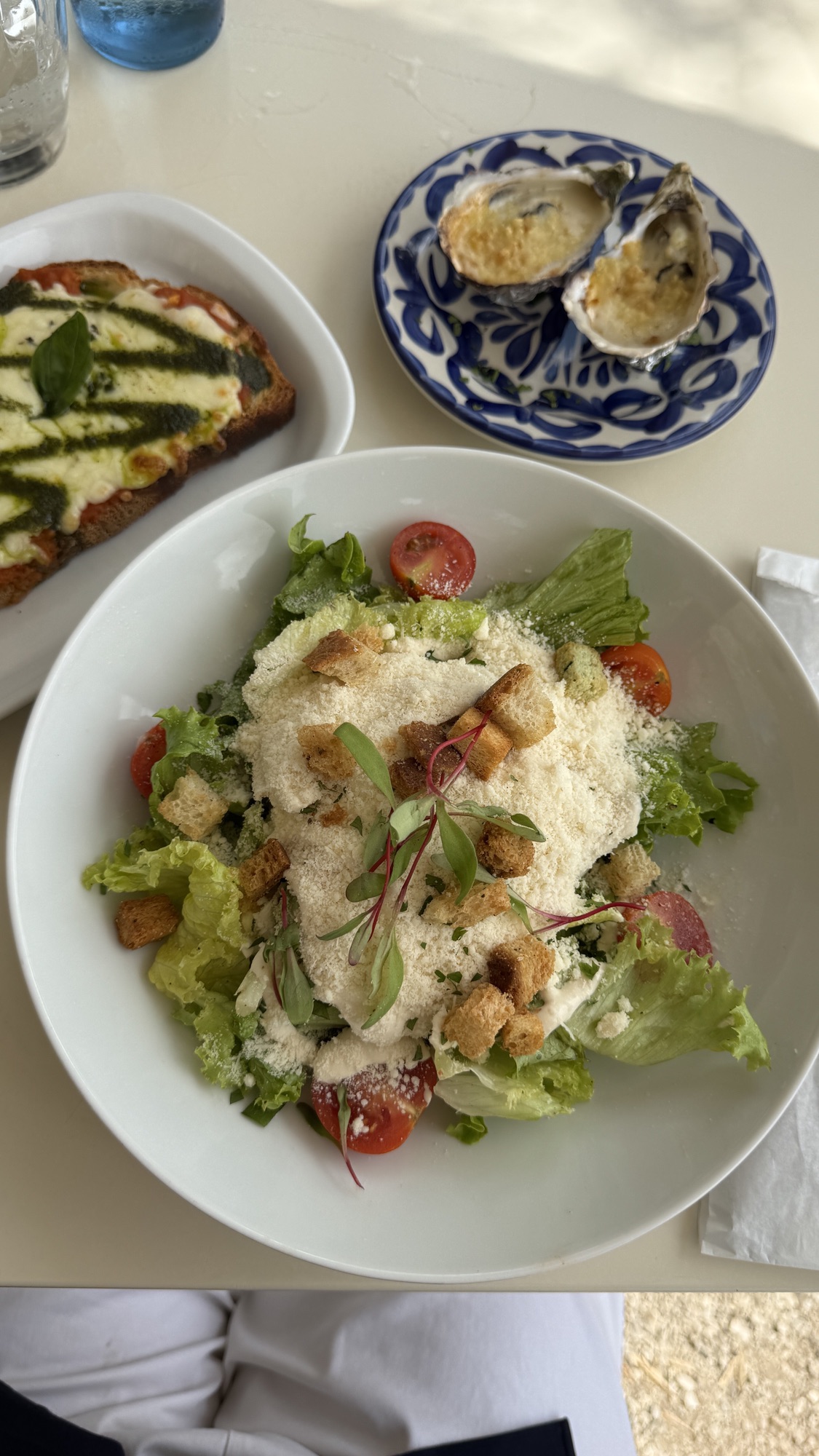
.
Palacio Valadares
In the heart of Lisbon’s historic center, overlooking the picturesque Largo do Carmo, stands Palácio Valadares—a building steeped in history and charm. Originally the site of the Estudo Geral, the forerunner of the University of Lisbon founded by King Dinis in 1290, the palace has undergone multiple transformations over the centuries: from a noble residence in the 15th century to a center of culture and education, eventually housing prestigious public schools.
Rebuilt in the 18th century after the devastating 1755 earthquake, it still preserves architectural features typical of the Pombaline era. Currently unused, it is the focus of restoration projects aimed at giving it a renewed role in the city’s cultural life.
Visiting it, one can sense the layers of time—each stone telling the story of a cultured, vibrant, and ever-evolving Lisbon.
.
Carmo Convent
The Convento do Carmo is a convent belonging to the Carmelite order, located in Lisbon near Rossio and the Castelo de São Jorge. The convent’s church, which at the time was the largest Gothic church in the city, was destroyed by the 1755 earthquake and remains to this day one of the most striking reminders of the disaster that struck the Portuguese capital.
.
In 1863, the architect of the Royal Household, Joaquim Possidónio da Silva, founded the Association of Portuguese Civil Architects, which later evolved into the current Association of Portuguese Archaeologists.
About a year later (1864), the Carmo Archaeological Museum was established here, with the purpose of preserving and exhibiting important sculptural pieces from old ruined buildings—especially from monastic houses dissolved in 1834—as well as structural elements of the temple itself, discovered among the rubble.
Over the 19th, 20th, and 21st centuries, the Carmo Archaeological Museum (MAC) has incorporated a valuable collection of historical, archaeological, and artistic artifacts spanning a wide chronological range. The museum’s collection includes objects and artworks from Prehistory to the present day, offering insight into the ways people have thought and felt throughout time and across various cultural dimensions.
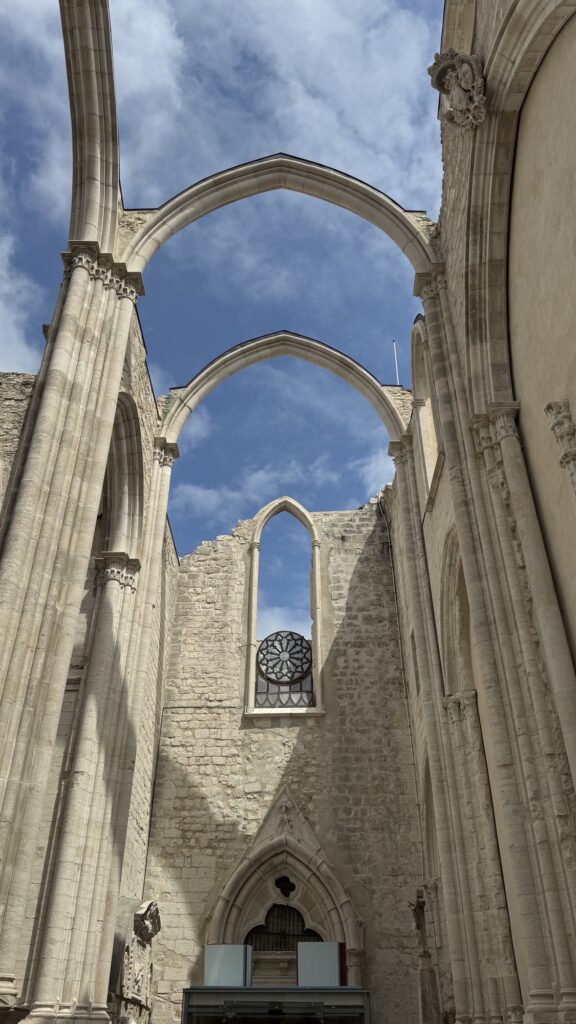
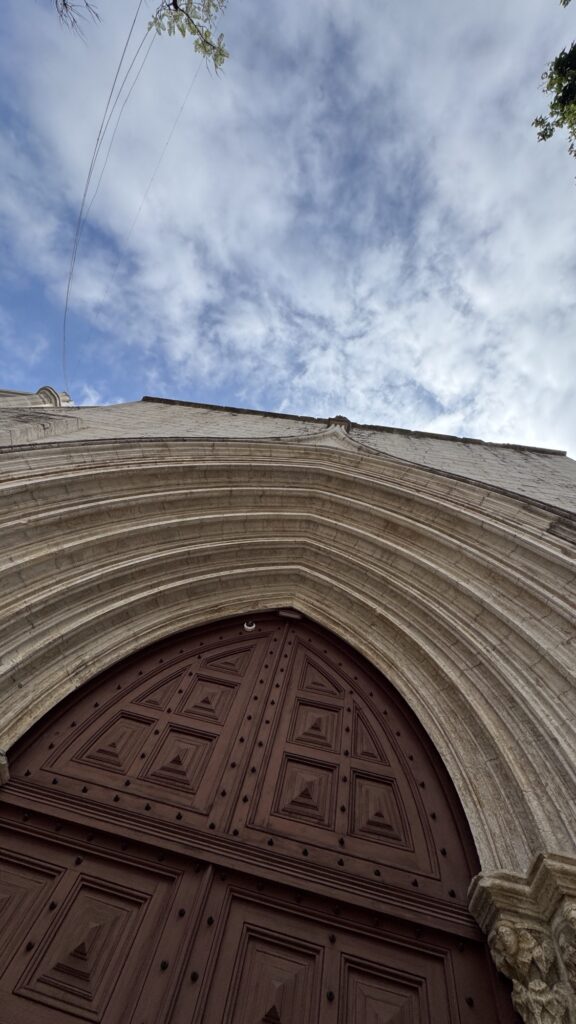
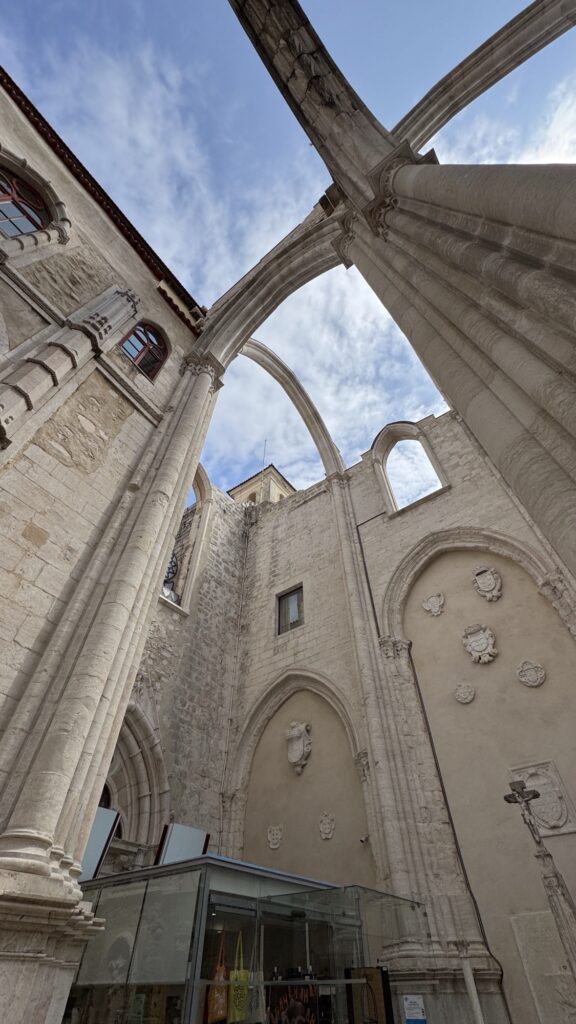
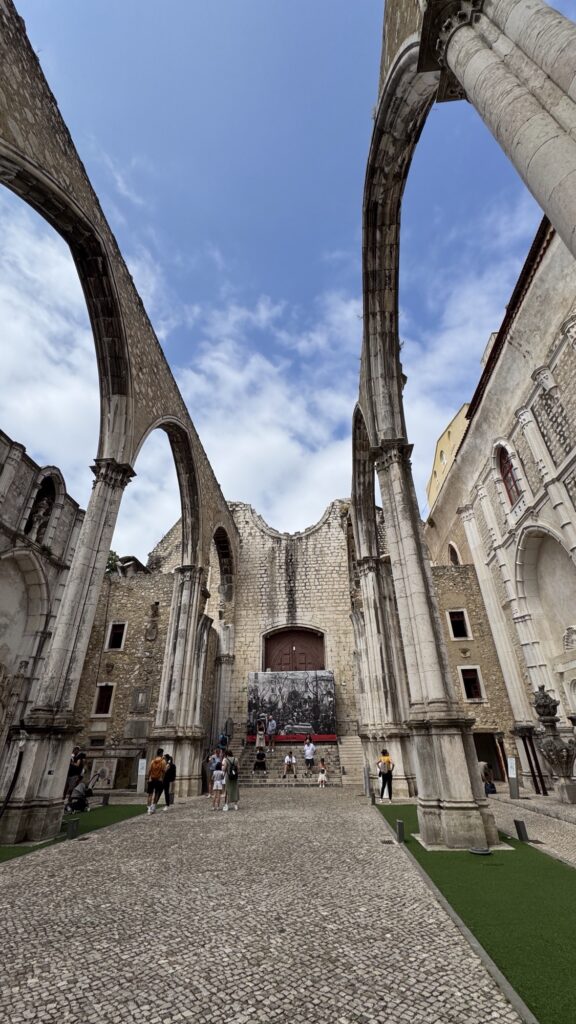
.
The Santa Justa Lift is one of the most iconic historical landmarks in the center of Lisbon. Designed by Raoul Mesnier du Ponsard, it was originally nicknamed the “Ouro-Carmo Lift.”
It connects Rua do Ouro with Largo do Carmo in a unique neo-Gothic structure, unlike any of the other lifts in the city. The wooden cabins, elegantly adorned with brass details, evoke a journey back in time as they ascend and descend toward the city’s most distinguished quarters. At the top of the tower lies one of Lisbon’s finest viewpoints, offering a stunning panorama of the city center, the castle, the Tagus River, and the striking ruins of the Convento do Carmo Church.
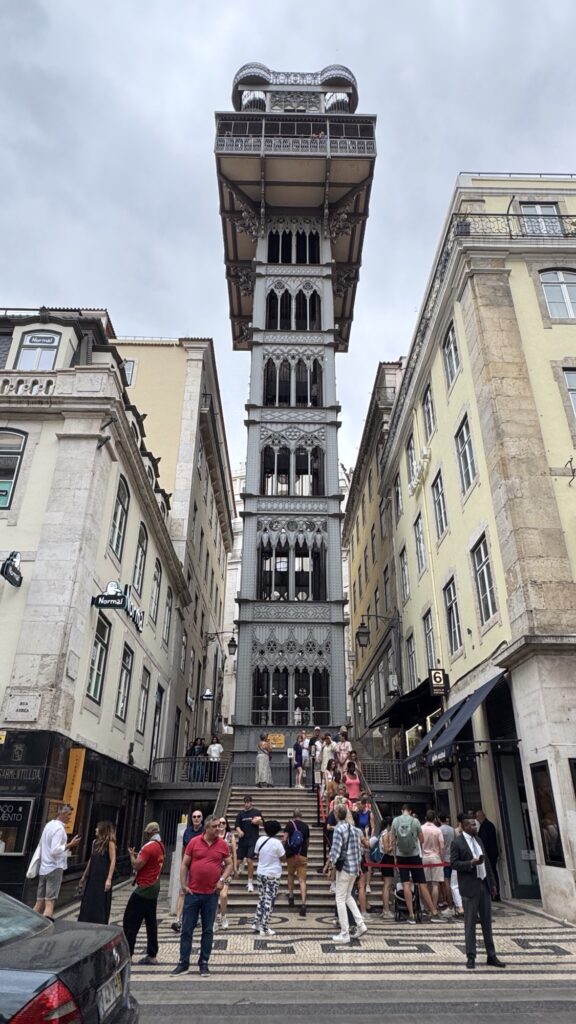

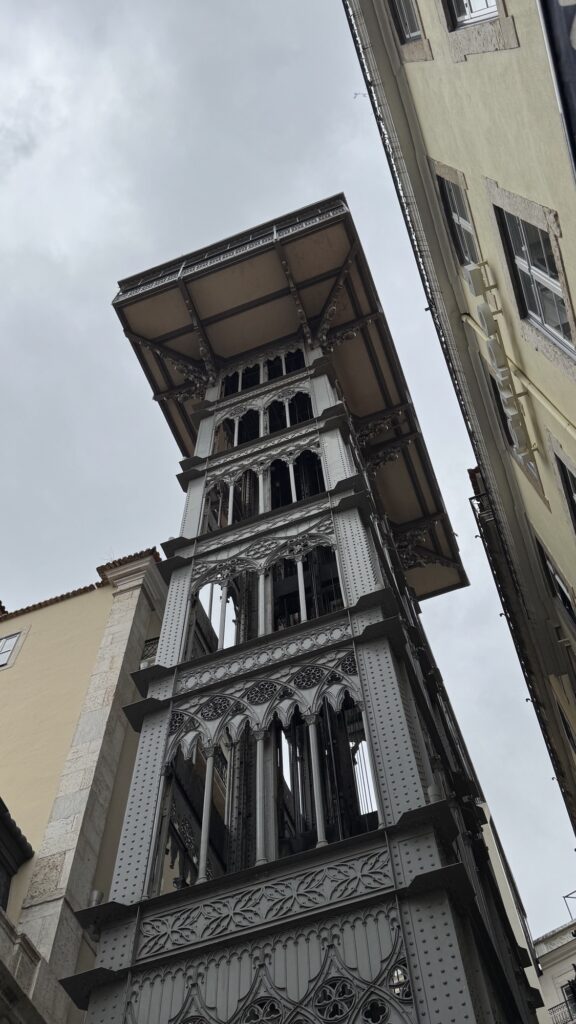
.
Reopened after eight years and housed in an 18th-century building, MUDE (Museum of Design and Fashion) blends architectural heritage with a contemporary vision. It traces the evolution of both Portuguese and international design across its various expressions—product design, fashion, and graphic arts.
Spread over eight floors, MUDE invites visitors to explore design as a cultural, social, and political force. It offers a mix of permanent collections, temporary exhibitions, and dynamic spaces for reflection, dialogue, and inspiration. This is not just a museum for displaying objects—it’s a space that challenges how we live, build, and imagine our everyday lives.
.
Arco da Rua Augusta
The Arco da Rua Augusta is one of Lisbon’s most iconic landmarks, built to celebrate the city’s rebirth after the devastating 1755 earthquake. Located at the entrance to Praça do Comércio, it is adorned with statues of national heroes and allegorical figures representing Glory, Genius, and Valor. Since 2013, the arch has been open to visitors: climbing to the top offers a spectacular panoramic view of the Baixa district, the Tagus River, and São Jorge Castle. Today, it stands not only as an architectural masterpiece but also as an unmissable viewpoint in the heart of Lisbon.
.
The Money Museum, inaugurated in April 2016, is located in the heart of Lisbon, within the former Church of São Julião. It explores the theme of money—its history and evolution in Portugal and around the world. There’s plenty to see and do: you can leave a personal testimony, mint and print virtual coins and banknotes featuring your own face, examine what banknotes are made of under a microscope, and interact with stories from around the globe.
The museum also offers a diverse cultural and educational program designed for all ages. With a creative and engaging approach, it turns the experience into a fun and informative activity that the entire family can enjoy.
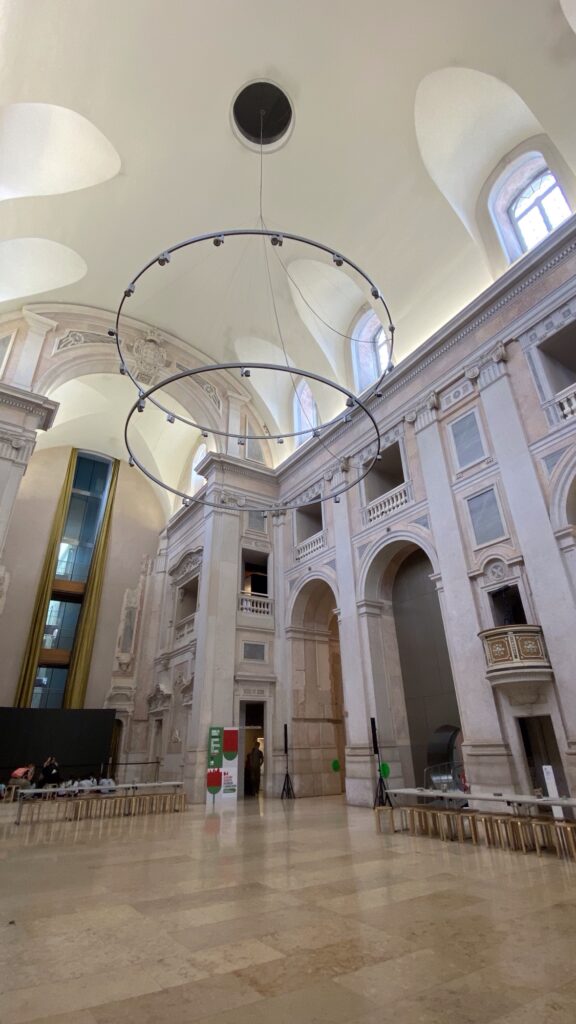
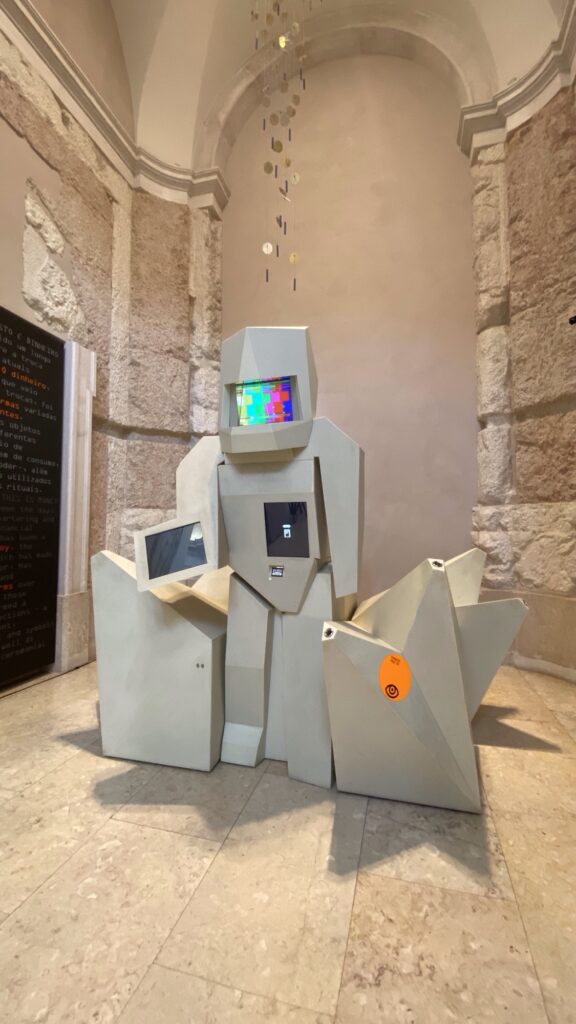
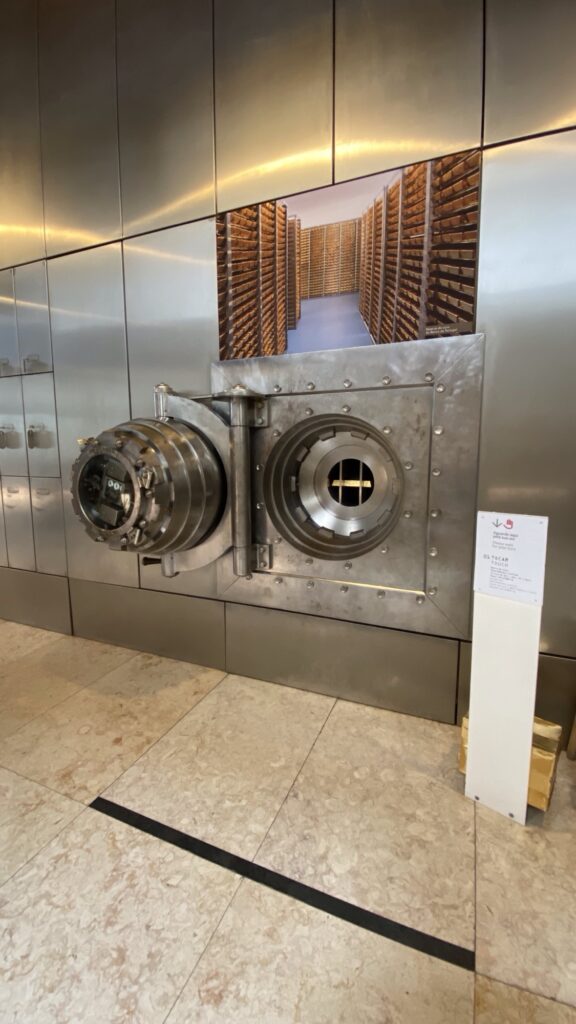
.
MNAC Museo Nazionale di arte contemporanea
Installed since 1911—the year of its foundation—in the former Convent of São Francisco da Cidade, a complex heavily damaged by the 1755 earthquake, the current National Museum of Contemporary Art – Museu do Chiado was reopened in 1994 following a major renovation and expansion project by French architect Jean-Michel Wilmotte, after a fire struck the area in 1988. The MNAC is a must-visit for anyone interested in discovering and enjoying Portuguese Romantic, Naturalist, Modern, and Contemporary art, featuring seminal works from the main movements spanning from the second half of the 19th century to the present.
The museum’s exhibition program plays a central role in its overall activity, which also includes guided tours, lectures, seminars, concerts, and a robust educational outreach program developed by its education department.
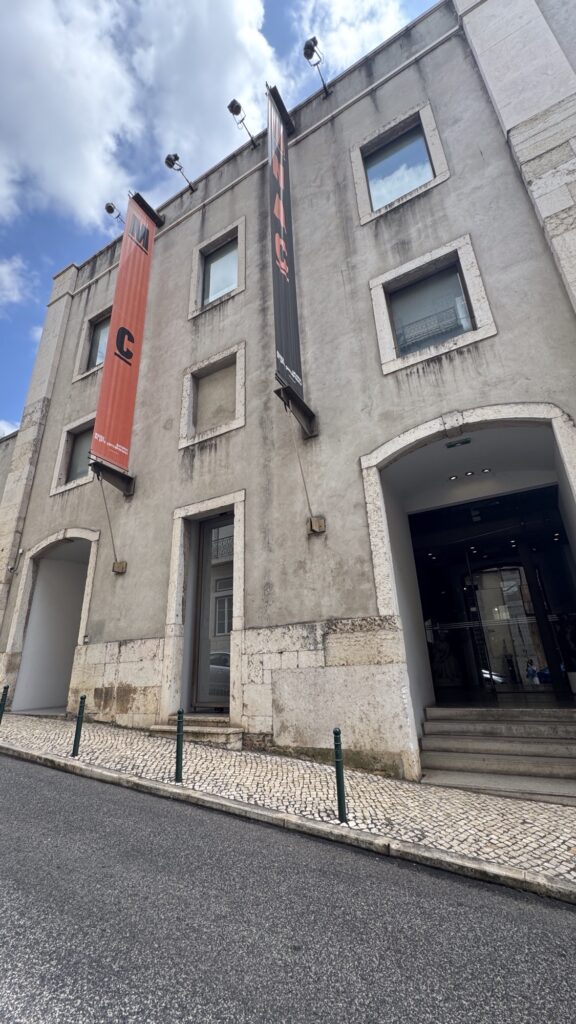

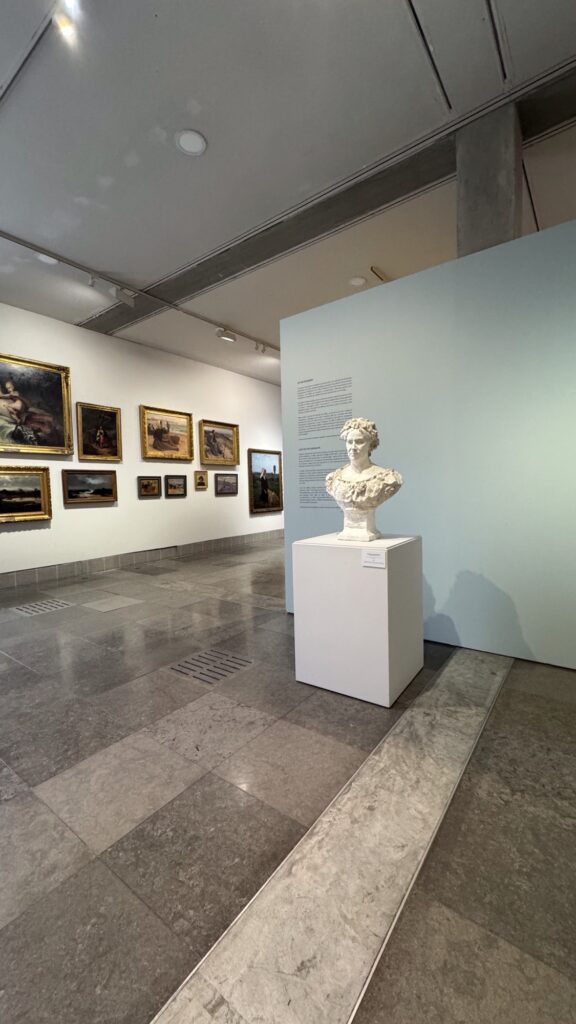
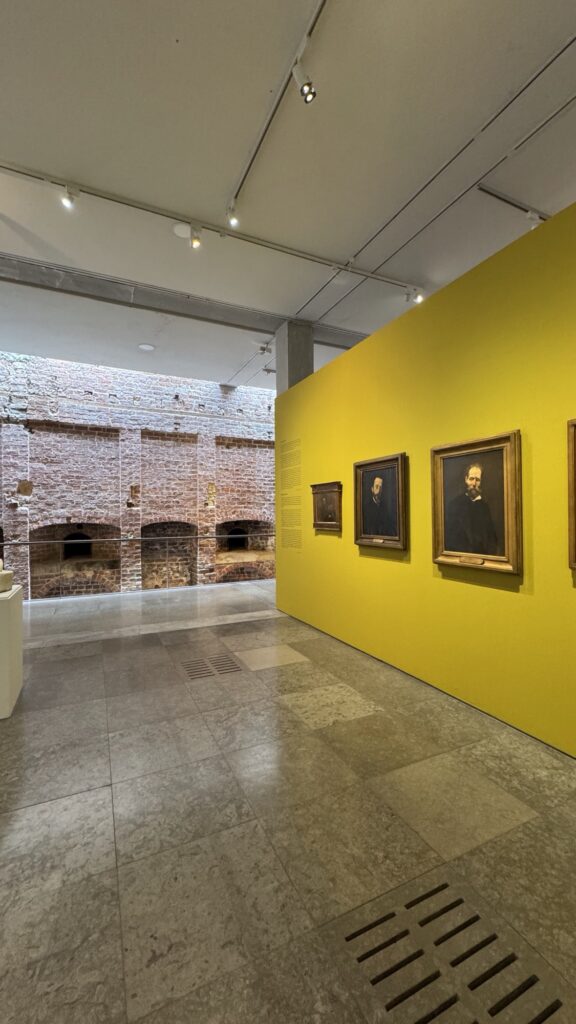
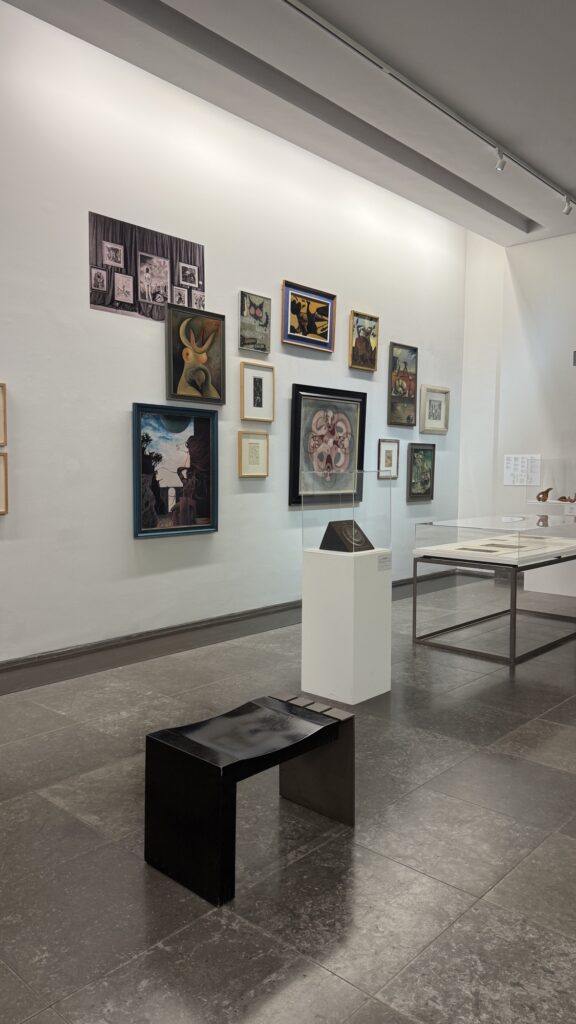
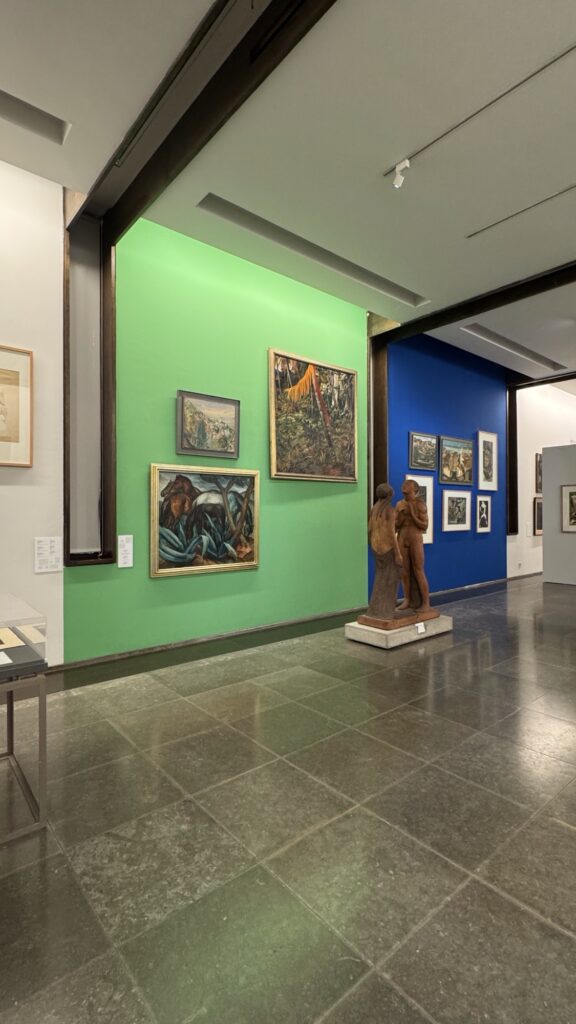
.
Cantinho do Avillez Chiado
In the heart of Chiado, Cantinho do Avillez is the most genuine expression of José Avillez’s culinary vision: a cuisine that speaks Portuguese with an international accent. Opened in 2011, this iconic spot blends tradition and modernity in a warm and authentic atmosphere.
The menu changes frequently, guided by seasonality and the chef’s creativity: contemporary tapas, reimagined Portuguese classics like codfish with migas or duck rice, and thoughtfully crafted vegetarian options. Each visit is an invitation to discover something new, while staying deeply rooted in Portuguese culinary heritage.
Must-tries: Tiger prawns with yuzu and truffle sauce, prawn moqueca with white rice, paired with a glass of Sidonio de Sousa Special Cuvée.
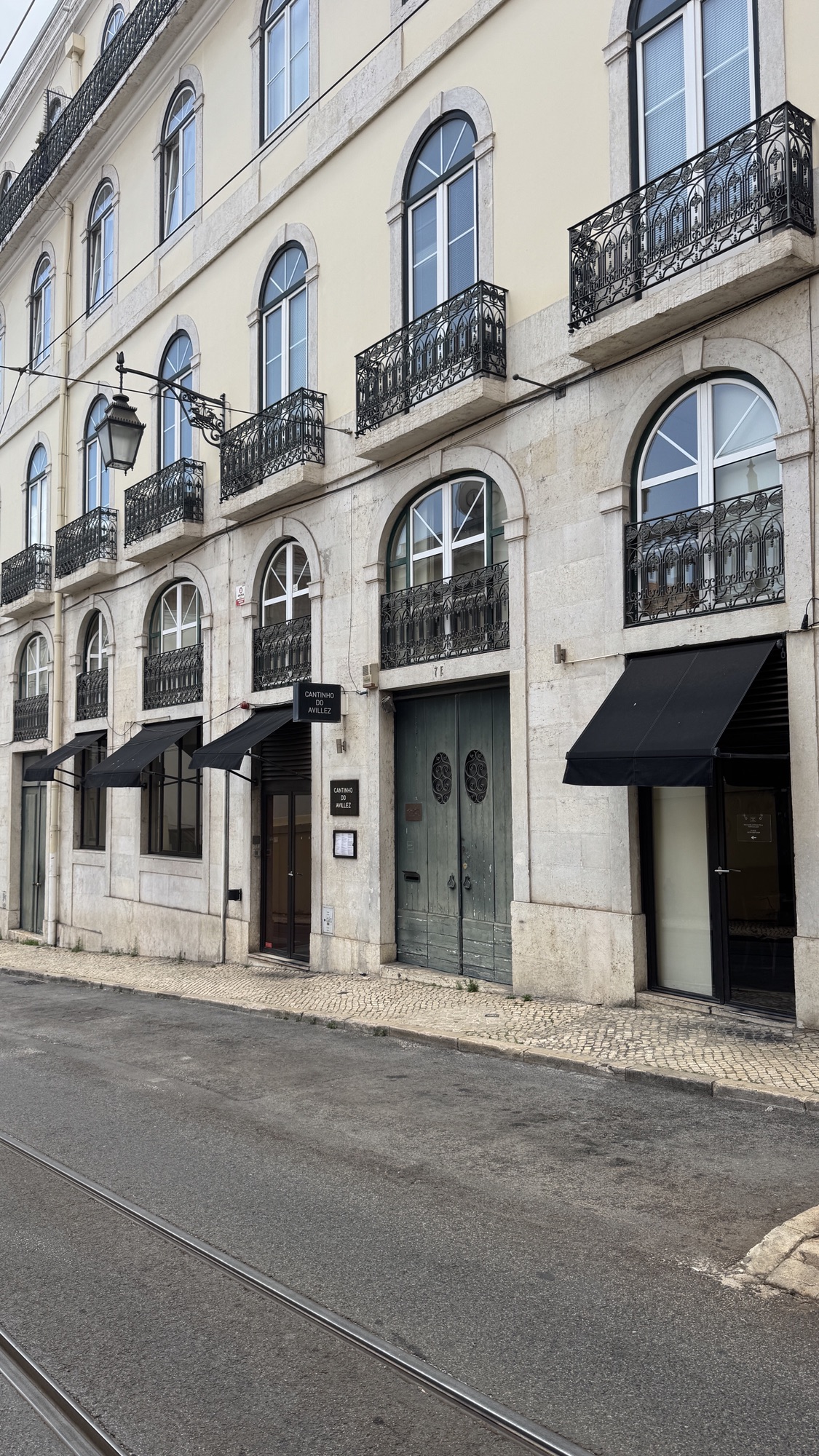
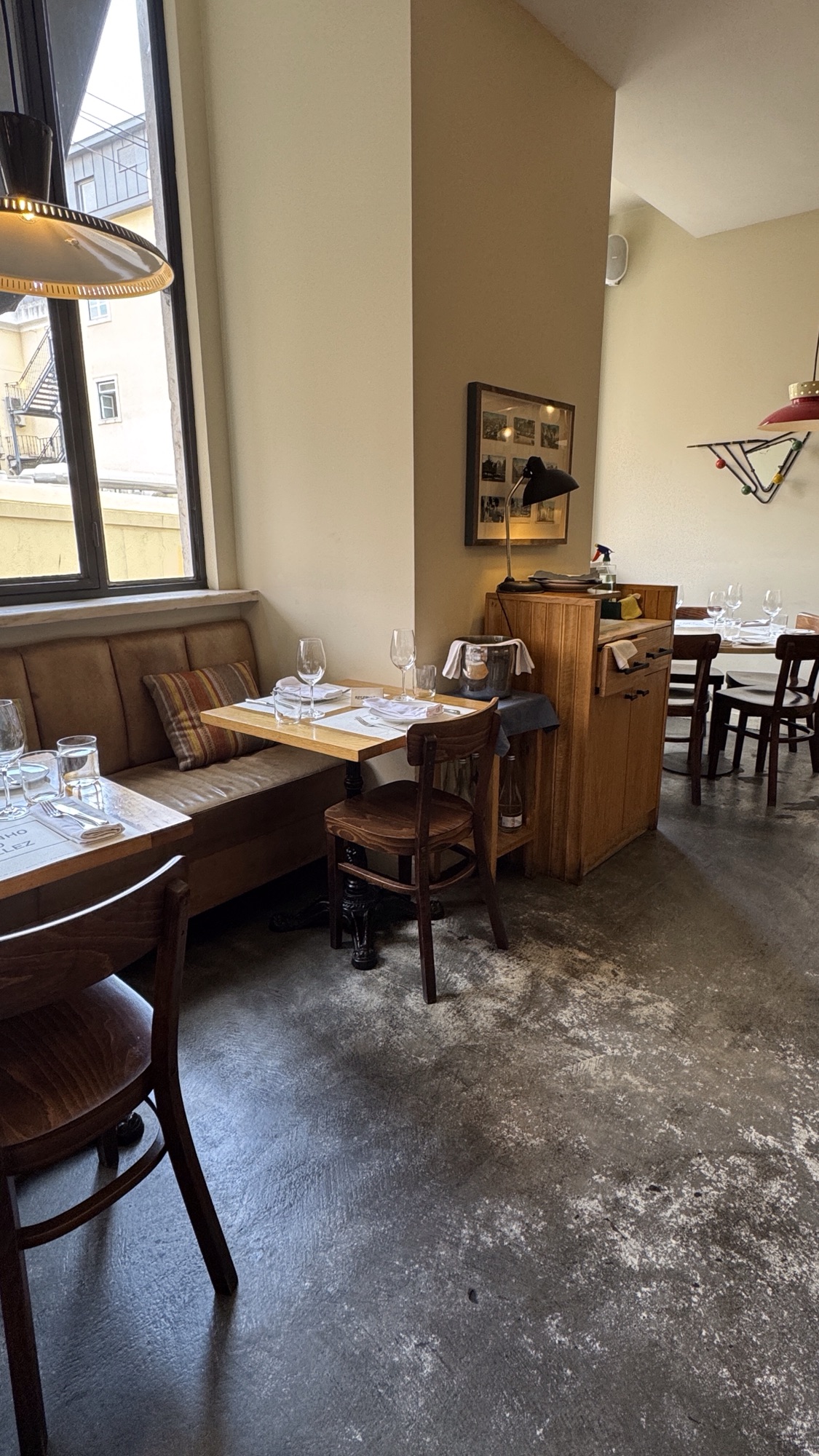

.
DAY 3
Elevador da Glória
Classified as a National Monument since 2002 and operated by the Carris company (line 51E), the Elevador da Glória is one of Lisbon’s most charming historical attractions. It connects Praça dos Restauradores with the Jardim de São Pedro de Alcântara, in the upper neighborhood known as Bairro Alto.
Inaugurated on October 24, 1885, it originally ran on water power, then steam, and was finally electrified in 1915. The lift was designed by engineer Raoul Mesnier du Ponsard, who also created the iconic Elevador de Santa Justa.
The track runs approximately 265 meters, with a 3-minute ride covering a 44-meter elevation gain and an average slope of 17%. It operates with two tramcars that counterbalance each other on inclined tracks powered by electric motors. The cars retain their vintage design, featuring wooden interiors and slanted benches, and are often adorned with urban graffiti art.
At the top, you’ll find the Miradouro de São Pedro de Alcântara, a scenic viewpoint offering stunning panoramas over the city center and the Tagus River—a perfect reward after the short, nostalgic climb.
.
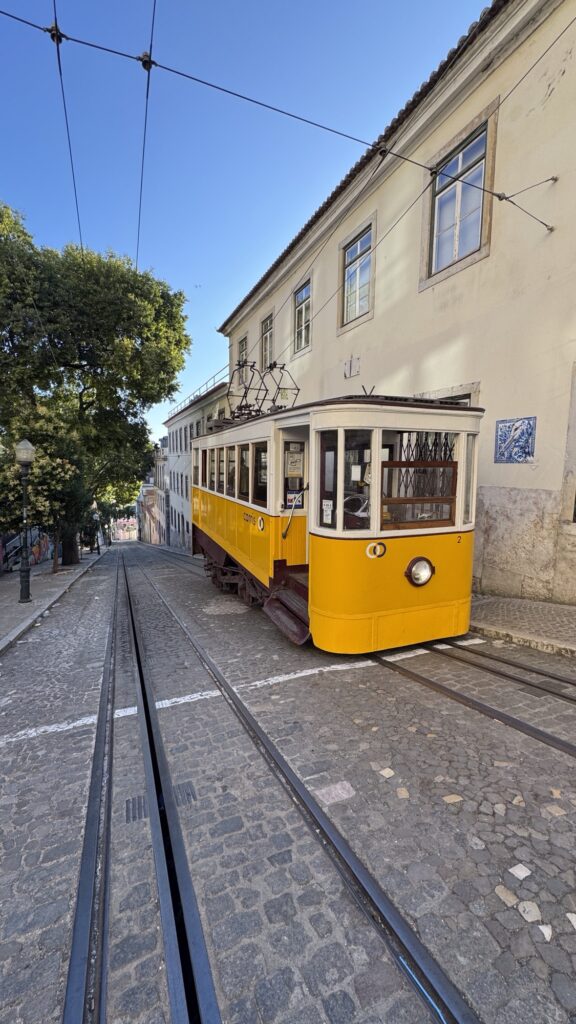
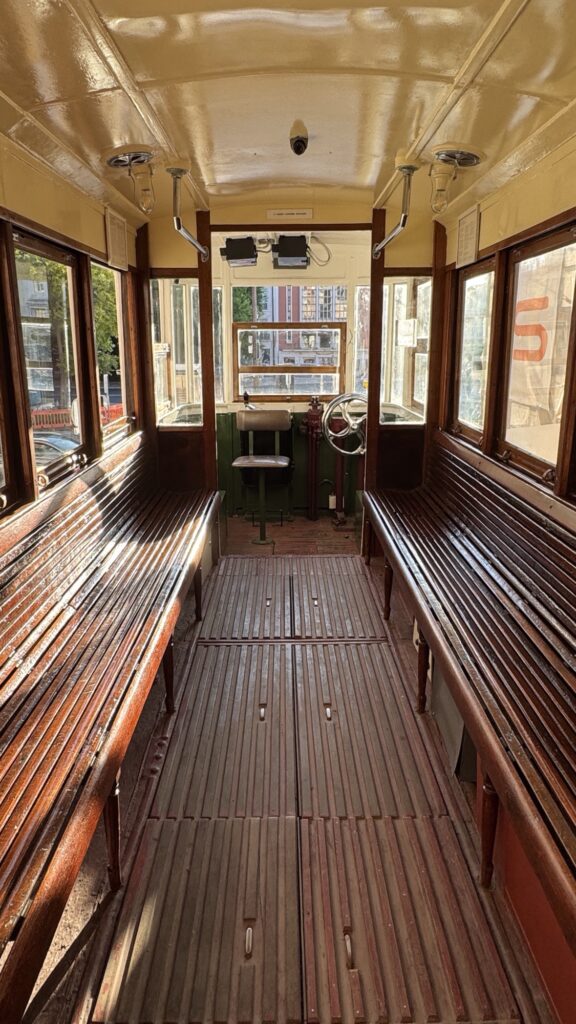
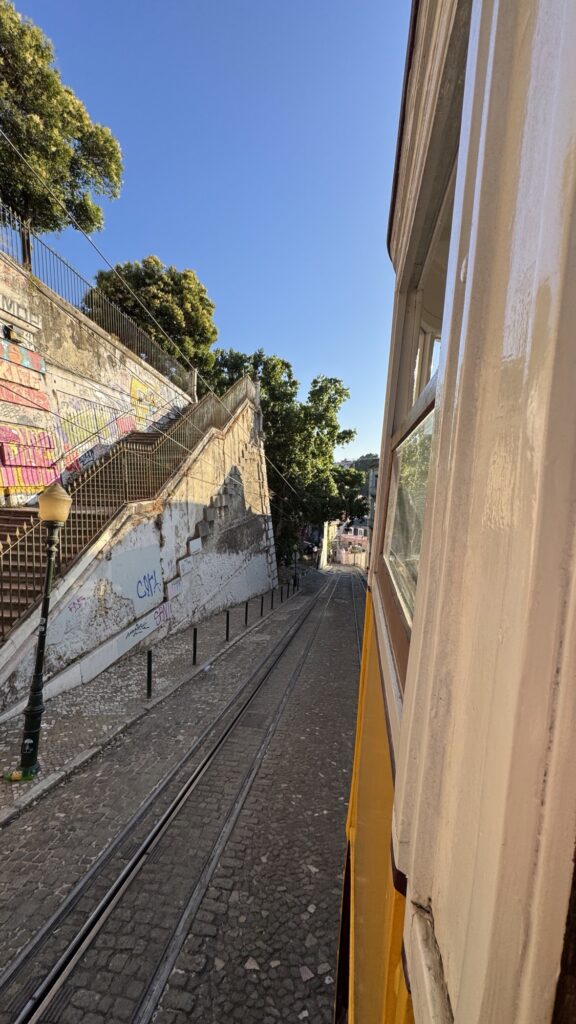
.
GAU Galeria de Art Urbana
The GAU – Galeria de Arte Urbana in Lisbon is a public initiative launched in 2008 by the City Council’s Department of Cultural Heritage, which has been transforming the city into a living canvas by promoting and regulating graffiti and street art in public spaces.
Originally created to manage authorized panels in areas such as Bairro Alto and Calçada da Glória, GAU has redefined the perception of urban art, offering curated, legal, and accessible spaces. Thanks to its efforts, graffiti and murals—once seen as acts of vandalism—are now a recognized and protected part of Lisbon’s urban heritage, serving both cultural and identity-building functions.
But GAU is more than murals on walls: it’s a dynamic and inclusive institution. It organizes workshops, social initiatives like Recicla o teu olhar (art on glass recycling bins), and MURO_LX, a street art festival launched in 2016 that has brought together hundreds of artists and local communities across different city districts. Alongside public projects, GAU curates open calls, editorial publications, and semiannual catalogs to document and preserve urban artistic practices.
Its core mission? To promote artistic citizenship, raise awareness about heritage conservation, and prevent vandalism through meaningful engagement with the urban community. And the impact is evident: over 350 artistic interventions have been recorded, along with numerous events and strong involvement from neighborhoods—including some of the most marginalized.
.
Museu Calouste Gulbenkian
The Calouste Gulbenkian Museum, nestled in the heart of a lush 7.5-hectare garden in Lisbon, is far more than a traditional museum: it is the visual testament to the refined taste and cosmopolitan vision of Calouste Sarkis Gulbenkian, an Armenian-British industrialist and avid art collector. Upon his death in 1955, he left more than 6,000 works of art to the foundation bearing his name, with the wish of creating a center for art and culture in the city.
Inaugurated in 1969, the museum was designed by Ruy Jervis d’Athouguia, Pedro Cid, and Alberto Pessoa to elevate the original collection with architectural grace. The building, a low-slung modernist structure surrounded by greenery, features interconnecting galleries, two auditoriums, and a library. Carefully planned interiors open up to serene views of the surrounding gardens, lakes, and winding paths, blurring the lines between art and nature.
Stepping inside is like embarking on a journey through 5,000 years of art history—from Ancient Egypt, Greece, Mesopotamia, and the Islamic world to Chinese and Japanese porcelain, and finally to Western masterpieces by Rembrandt, Monet, Renoir, Manet, Degas, and Turner. One highlight is the exceptional collection of jewelry and glassware by René Lalique, personally curated by Gulbenkian himself.
Beyond the permanent collection, the complex also includes the Modern Art Centre (CAM), originally opened in 1983 and recently reimagined by Japanese architect Kengo Kuma. His renovation introduced a covered walkway inspired by the Japanese concept of engawa, expanding exhibition spaces and drawing nature even deeper into the heart of the museum experience.
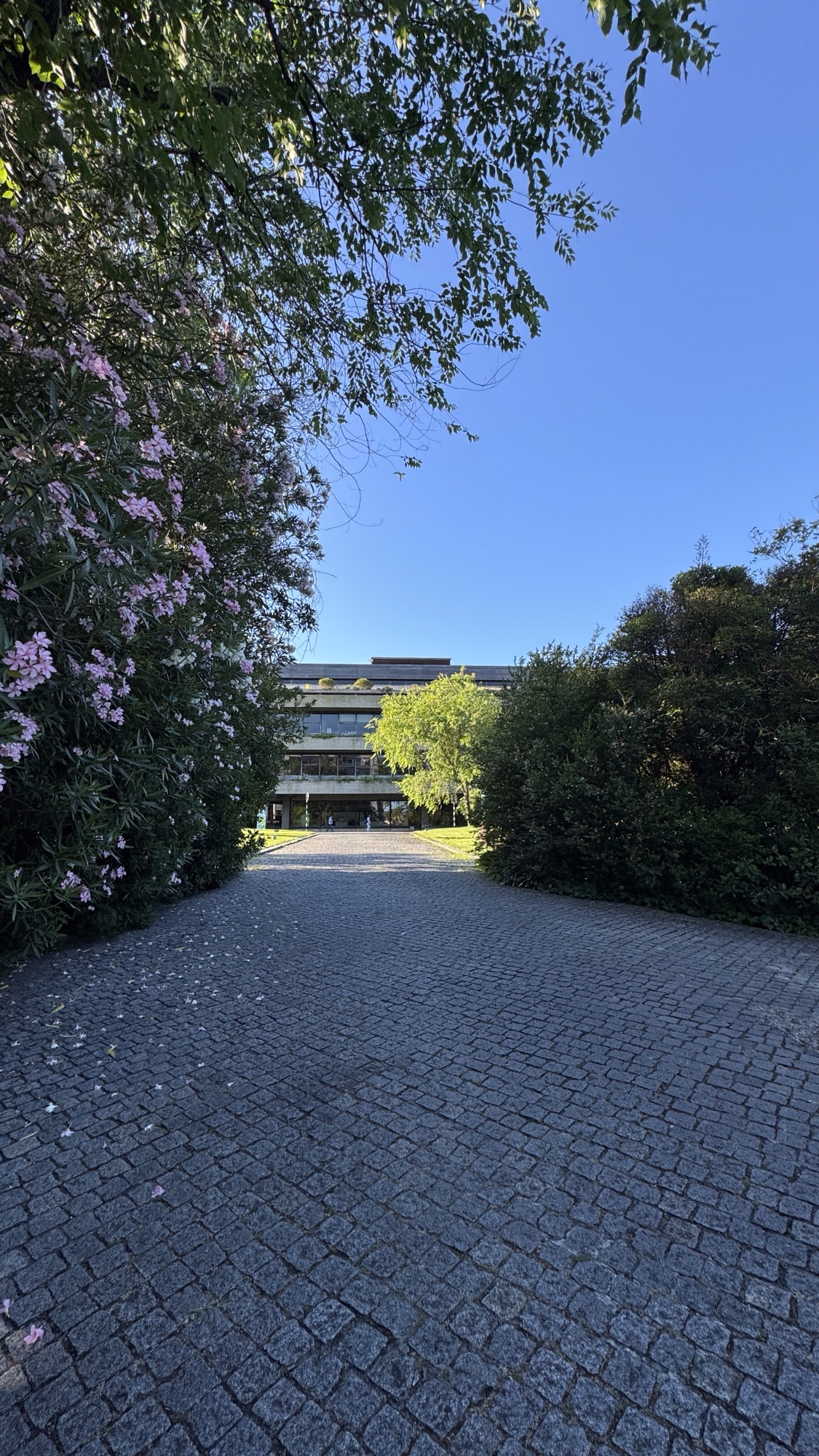


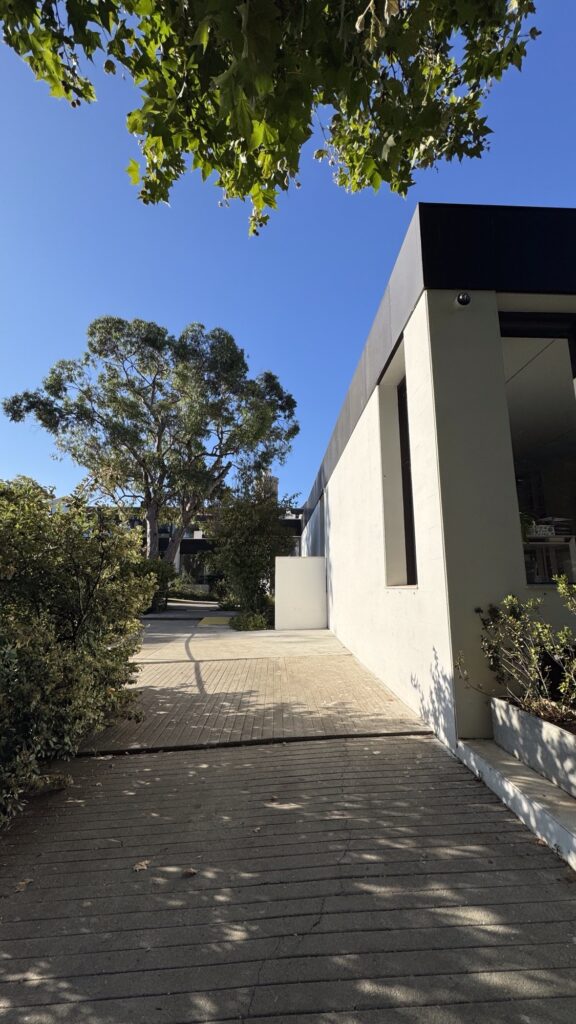

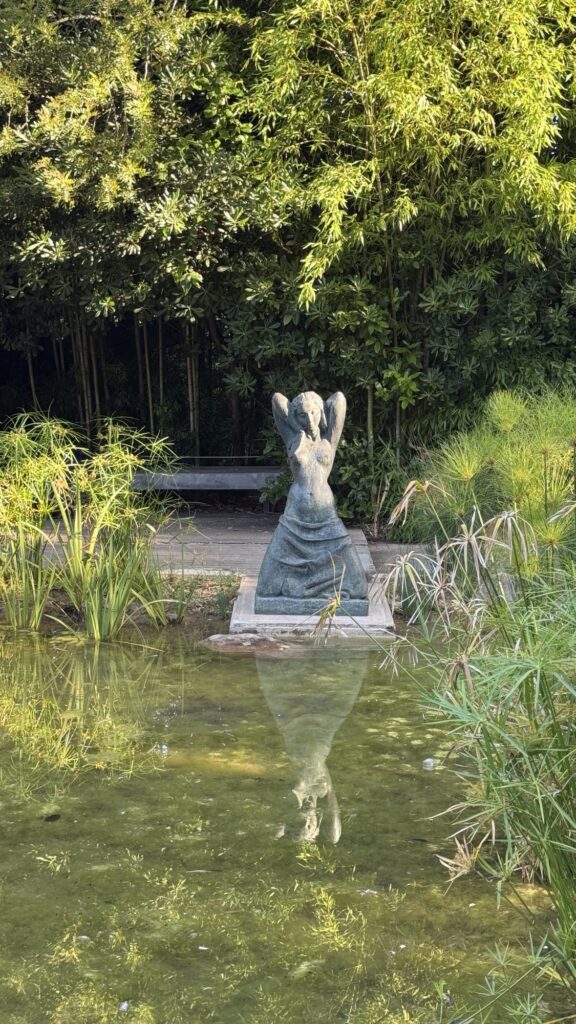
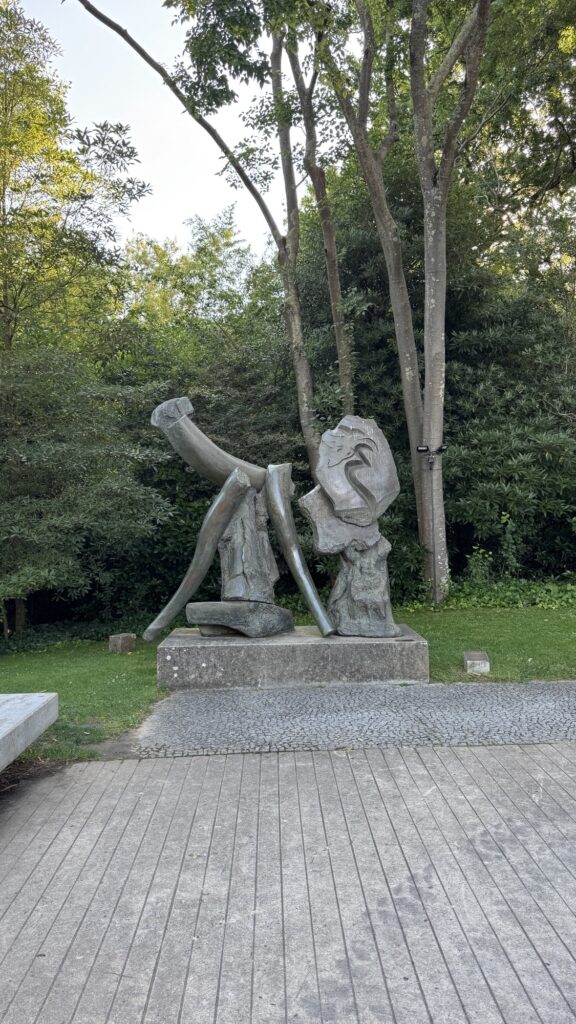
.
CAM Centro de Arte Moderna Gulbenkian
The Centro de Arte Moderna (CAM) is a vibrant artistic and cultural hub that houses one of the most significant collections of modern and contemporary art in Portugal, including the largest representation of Portuguese artists from the 20th and 21st centuries.
The idea for CAM originated in 1956, and it became a reality in July 1983, when it was inaugurated under the direction of José de Azeredo Perdigão, founding president of the Calouste Gulbenkian Foundation. The original building was designed by Sir Leslie Martin and his associates.
In September 2024, the museum entered a new era with the reopening of a completely redesigned space by renowned Japanese architect Kengo Kuma. Nestled in a new garden by Vladimir Djurovic, the renovated CAM features enhanced transparency, a 100-meter-long ceramic-clad façade, and renewed exhibition spaces. Inspired by the Japanese concept of engawa—a traditional architectural element that harmonizes indoor and outdoor spaces—Kuma’s vision brings nature and culture into seamless dialogue.
CAM was not only envisioned as a home for its vast modern and contemporary collection but also as a platform for emerging artists working across disciplines. True to this mission, CAM became the home of ACARTE, a pioneering multidisciplinary program launched in 1984 by Madalena de Azeredo Perdigão.
Today, CAM hosts a wide range of exhibitions—many of them shown in Portugal for the first time—alongside a sound art gallery, a learning space, and an ambitious Live Arts program. The opening exhibition features acclaimed Portuguese artist Leonor Antunes, who presents a monumental sculptural installation occupying the museum’s Nave, in conversation with selected works from the CAM collection.
With nearly 12,000 works of art, including paintings, sculptures, installations, drawings, engravings, photographs, and video/film, CAM showcases pieces by both prominent Portuguese and international artists, especially from the British art scene.
Aligned with the Calouste Gulbenkian Foundation’s commitment to sustainability, CAM is a member of the Gallery Climate Coalition, the leading international network of art institutions committed to climate action and building a sustainable future for the arts.
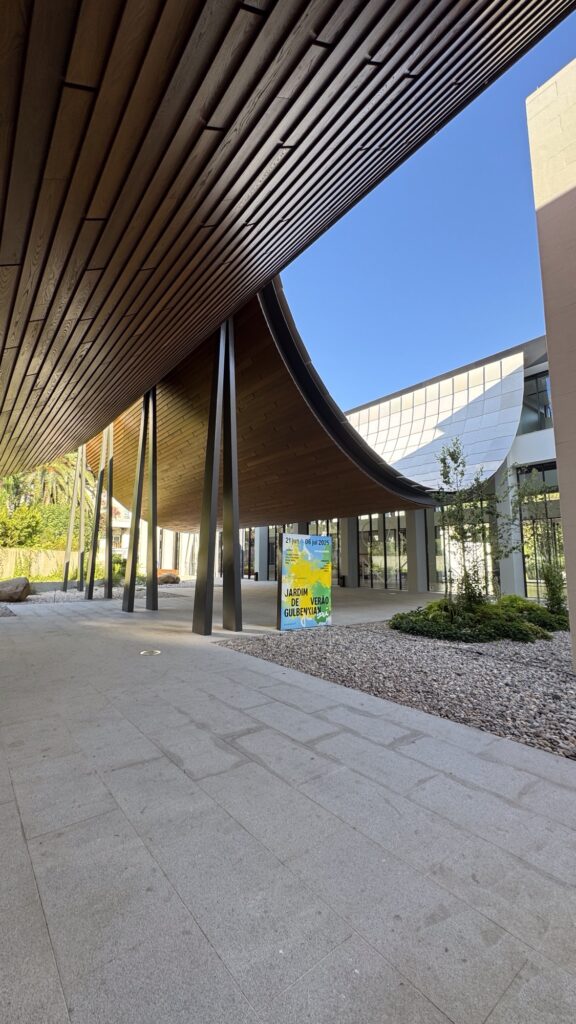
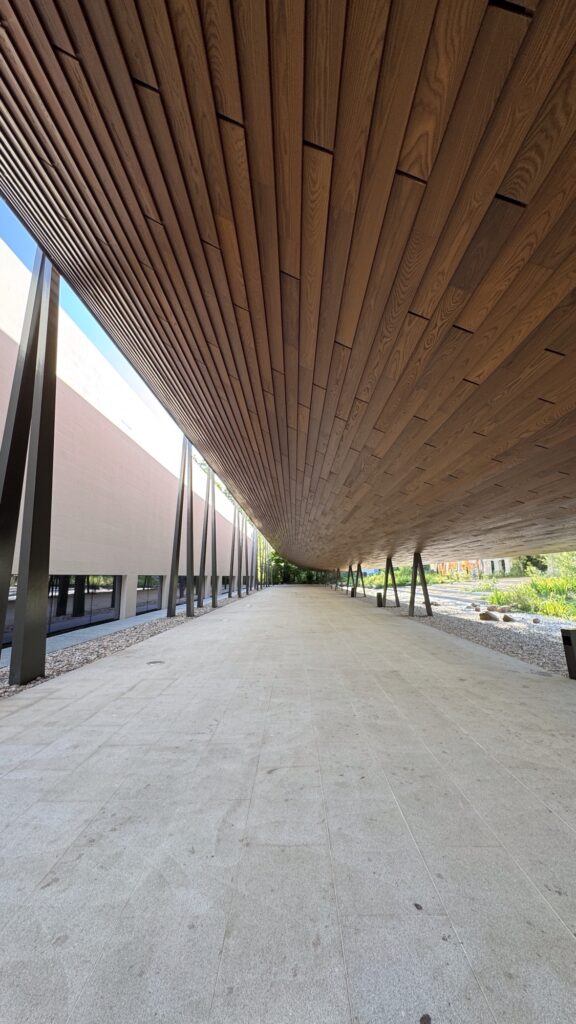

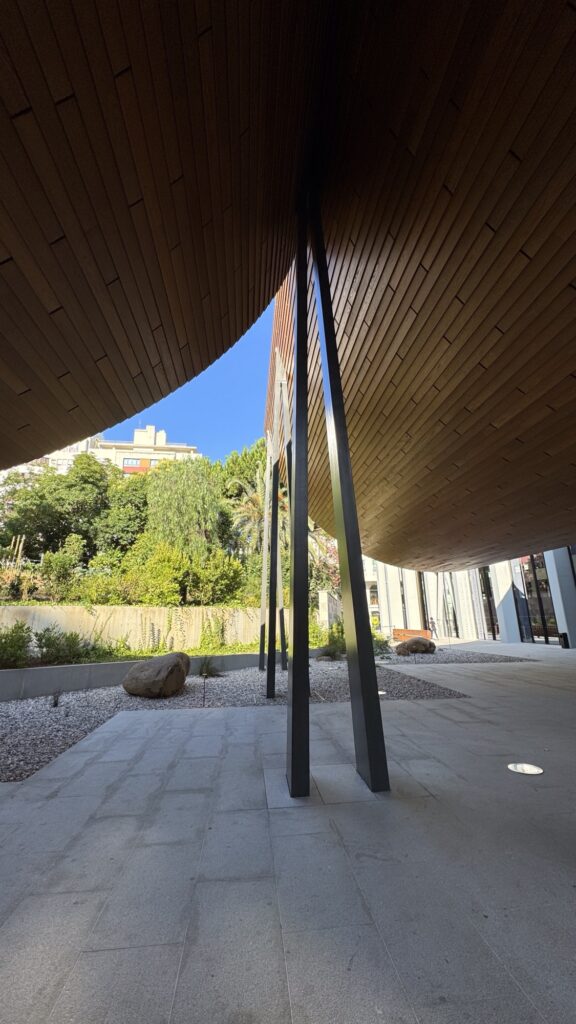
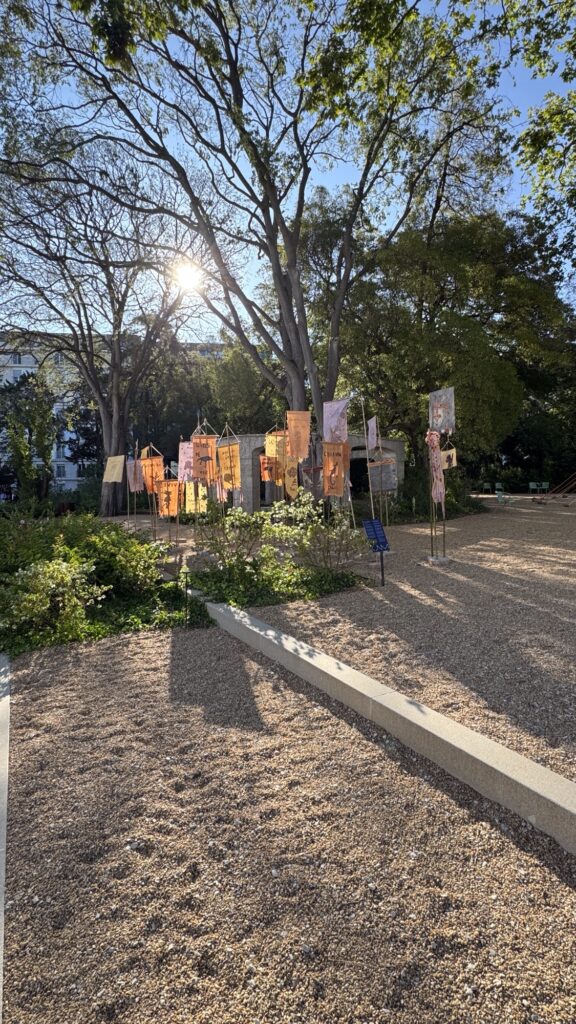
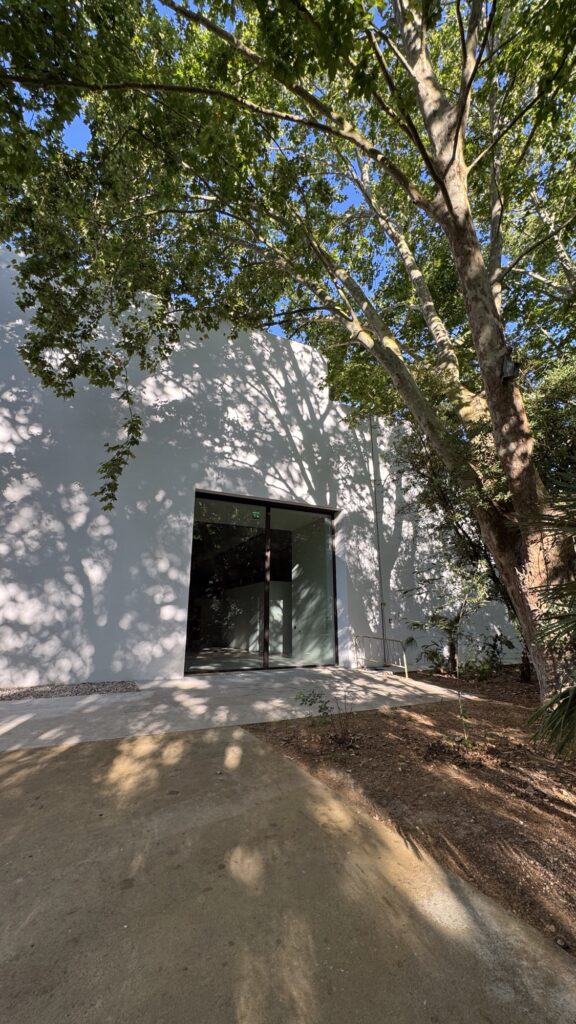
.
Among the most surprising and evocative places in Lisbon is the National Tile Museum (Museu Nacional do Azulejo)—a one-of-a-kind institution that traces the evolution of azulejos, the iconic glazed ceramic tiles that adorn the façades, churches, palaces, and train stations across Portugal.
Housed in the 17th-century Convent of Madre de Deus, founded in 1509 by Queen Dona Leonor, the museum is much more than just a tile display: it’s a journey through the history of Portugal, art, and ceramic decoration. Its galleries preserve azulejos from the 15th century to the present day, documenting the transition from Islamic and geometric patterns to large baroque figurative panels, and on to contemporary installations.
One of the most extraordinary pieces is the 23-meter-long panoramic panel depicting Lisbon before the devastating earthquake of 1755—a breathtaking work that captures the city in minute detail before its transformation.
The visit winds through rooms that still preserve the sacred atmosphere of the convent, including a magnificent cloister and a baroque-style church, richly decorated with gold and multicolored tiles.
Though slightly off the main tourist circuits, the Museu Nacional do Azulejo is absolutely worth a visit—if only to discover how ceramic art can tell the story of an entire civilization. It’s a place where aesthetic beauty, spirituality, and history merge in a deeply Portuguese way, making it a hidden gem in the heart of the capital.
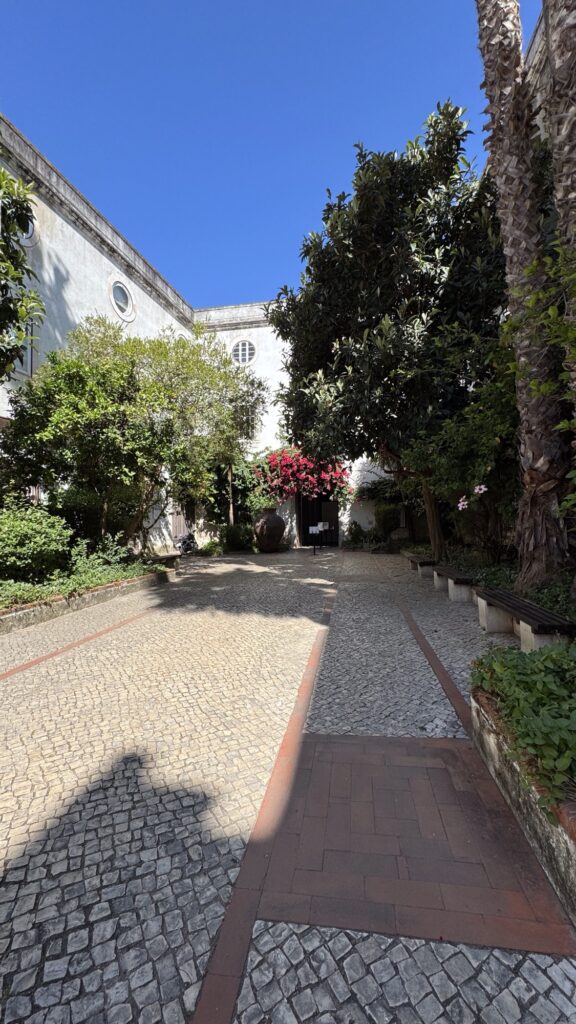
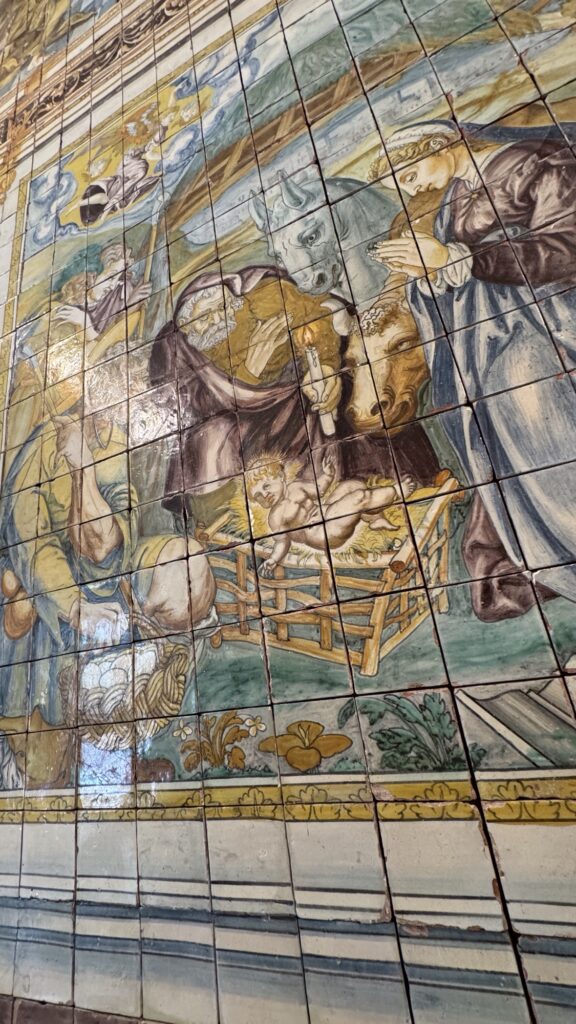
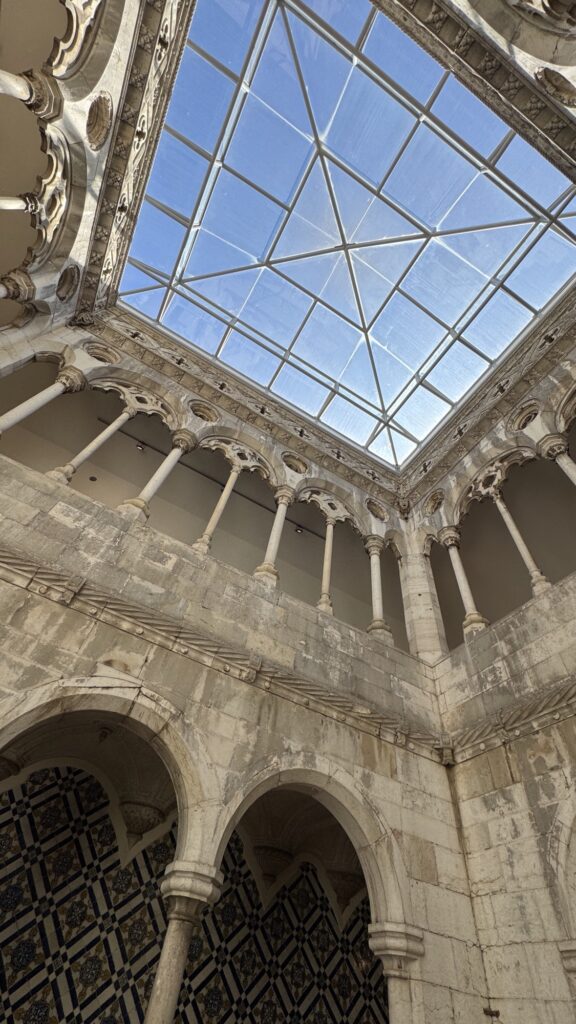
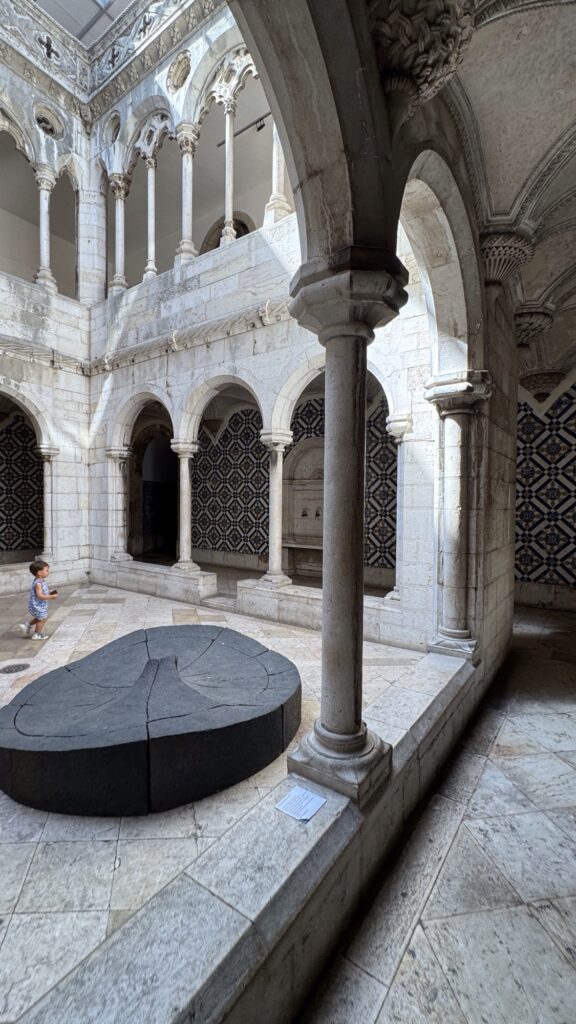
.
A Severa Casa de Fados
In the heart of Bairro Alto, A Severa is much more than a traditional Casa de Fados—it’s a living piece of Lisbon’s history, run by the same family since 1955. Intimate and atmospheric, lit by the soft glow of candlelight, the venue pays tribute to the legendary Maria Severa with evenings that blend traditional cuisine and authentic fado.
Each night, the room comes alive with powerful voices and soulful Portuguese guitars, while between performances, guests enjoy a high-quality Portuguese dinner crafted with care and top-notch ingredients. Exposed brick, azulejos, and vintage photographs complete the immersive experience. The charm is timeless, the show is included in the price… and reservations are a must.
Don’t miss signature dishes like Ameijoas à Bilbao Pato and Tiger Prawns with creamy shrimp and lime rice. From the house cocktail menu, we recommend Fado nas Veias—a blend of gin, licor de poejo (pennyroyal liqueur), and soda.

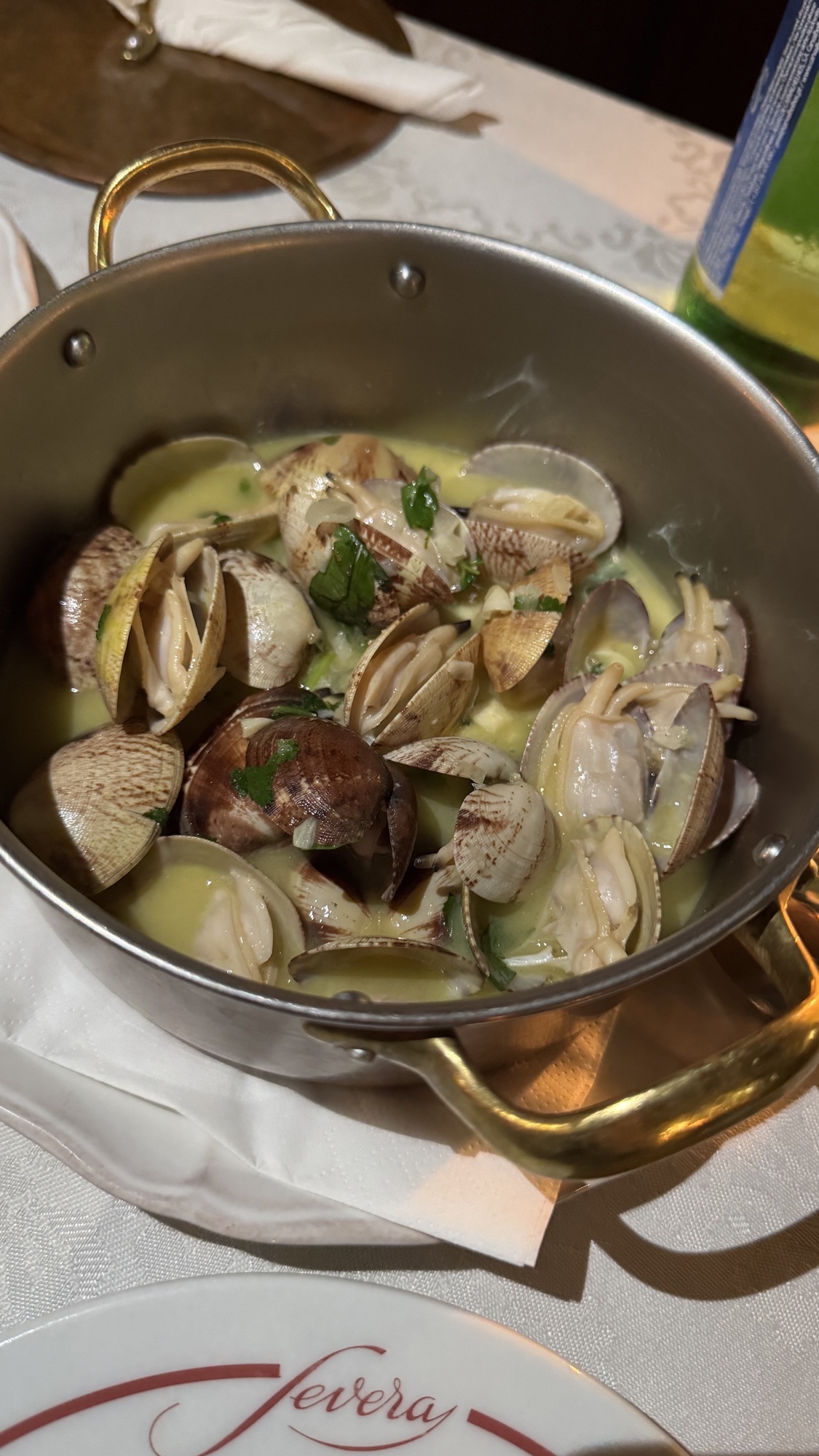
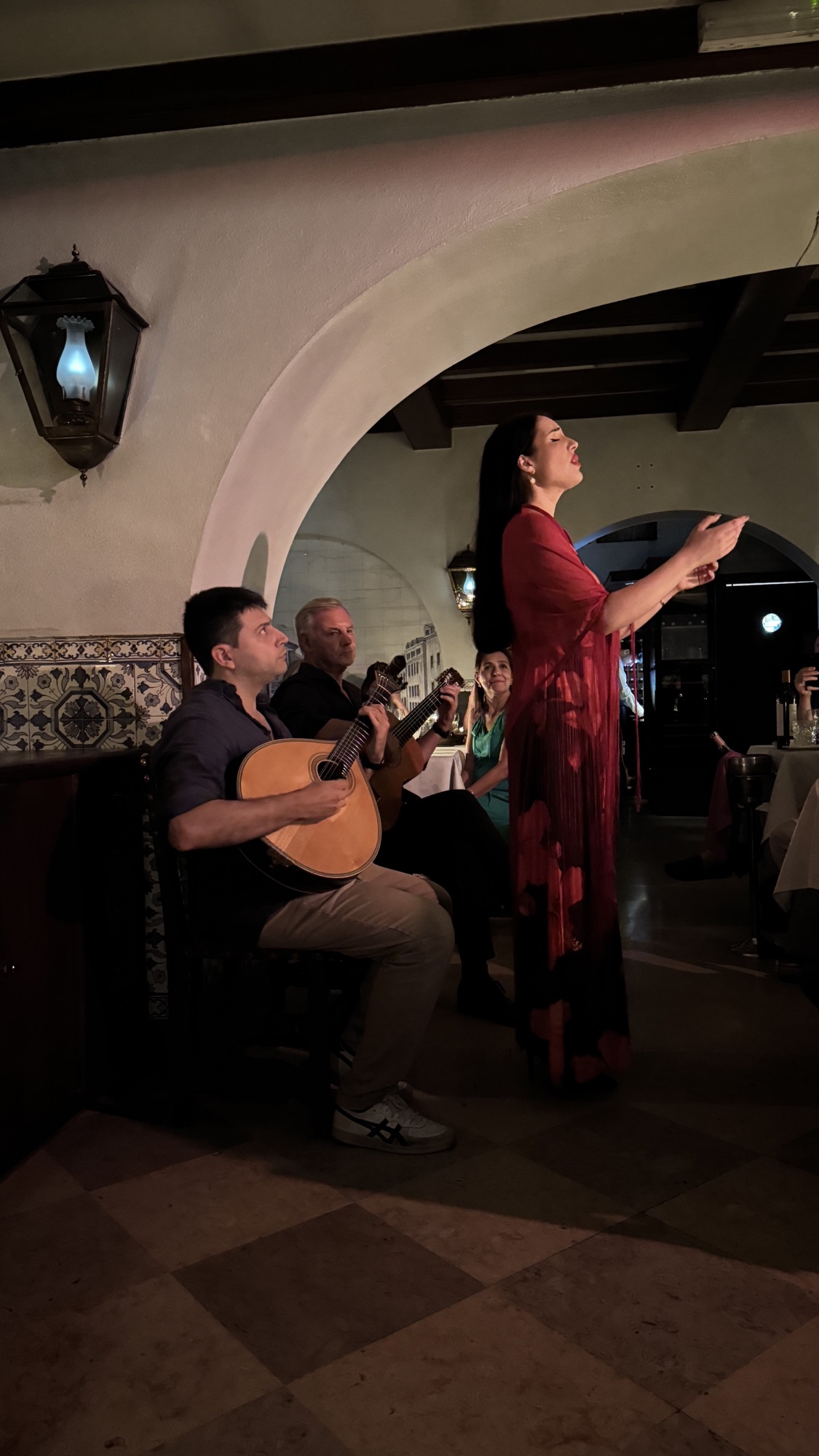
Images in the text by Laura Renieri, cover photo by Claudio Schwarz | All rights reserved


